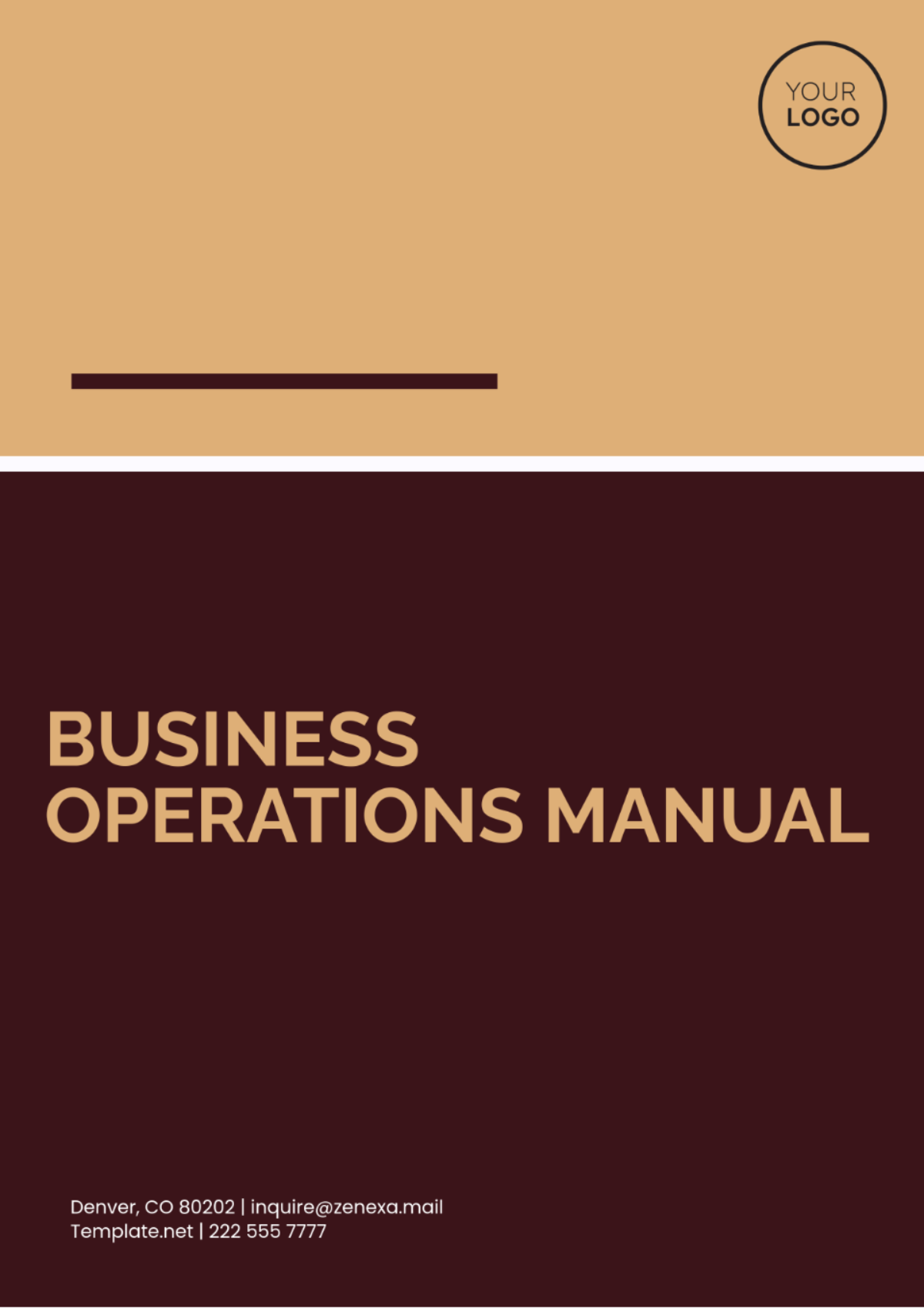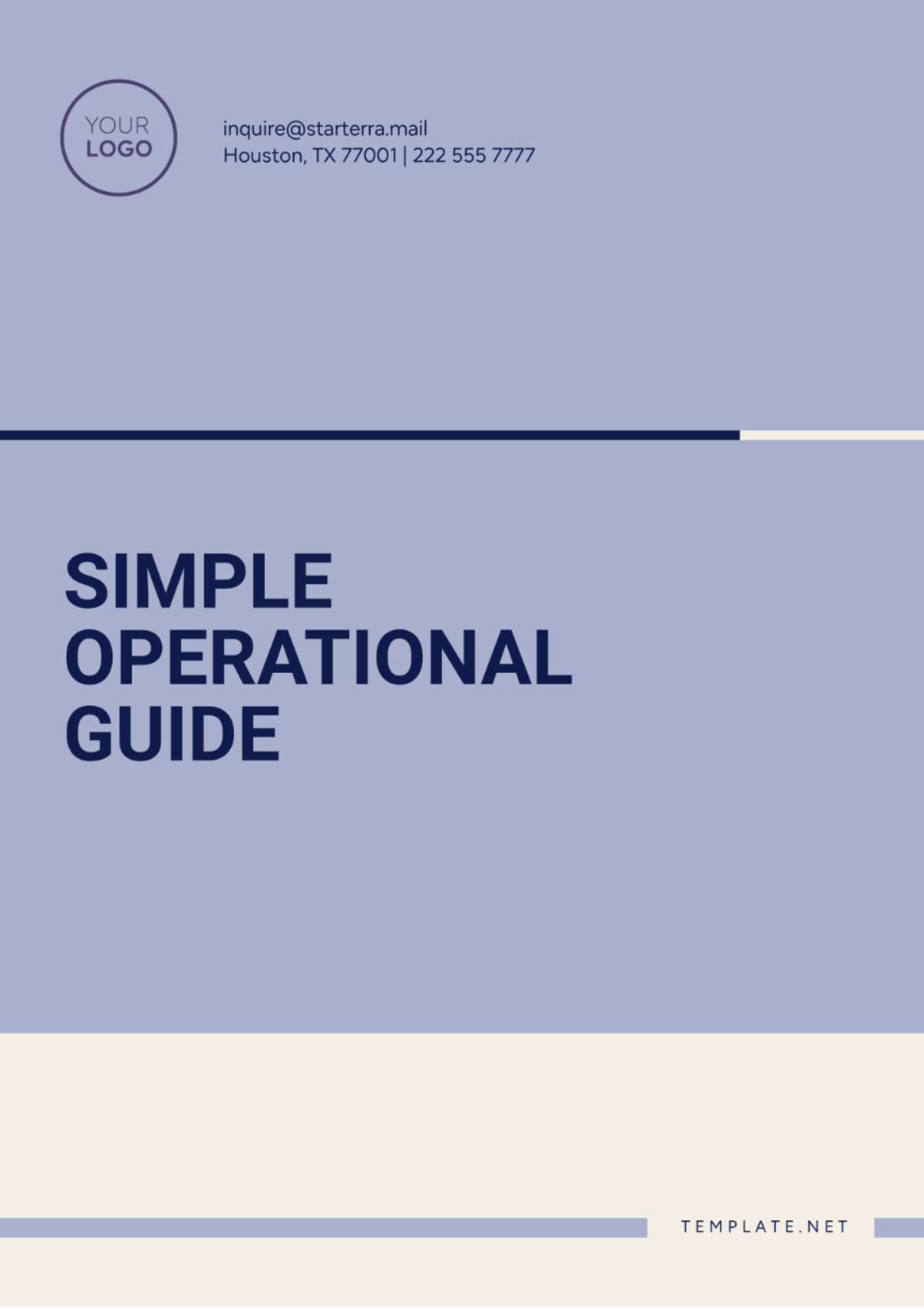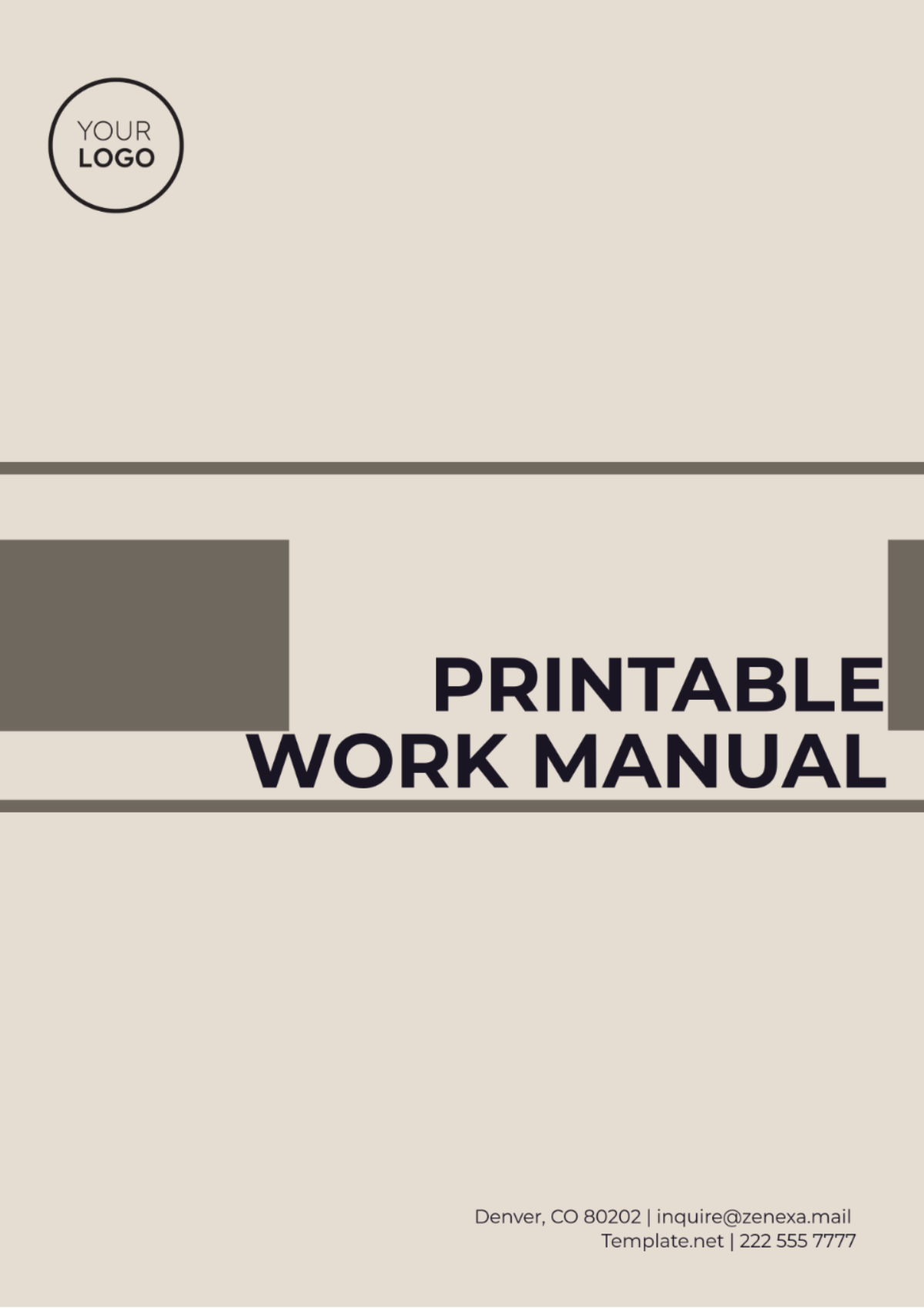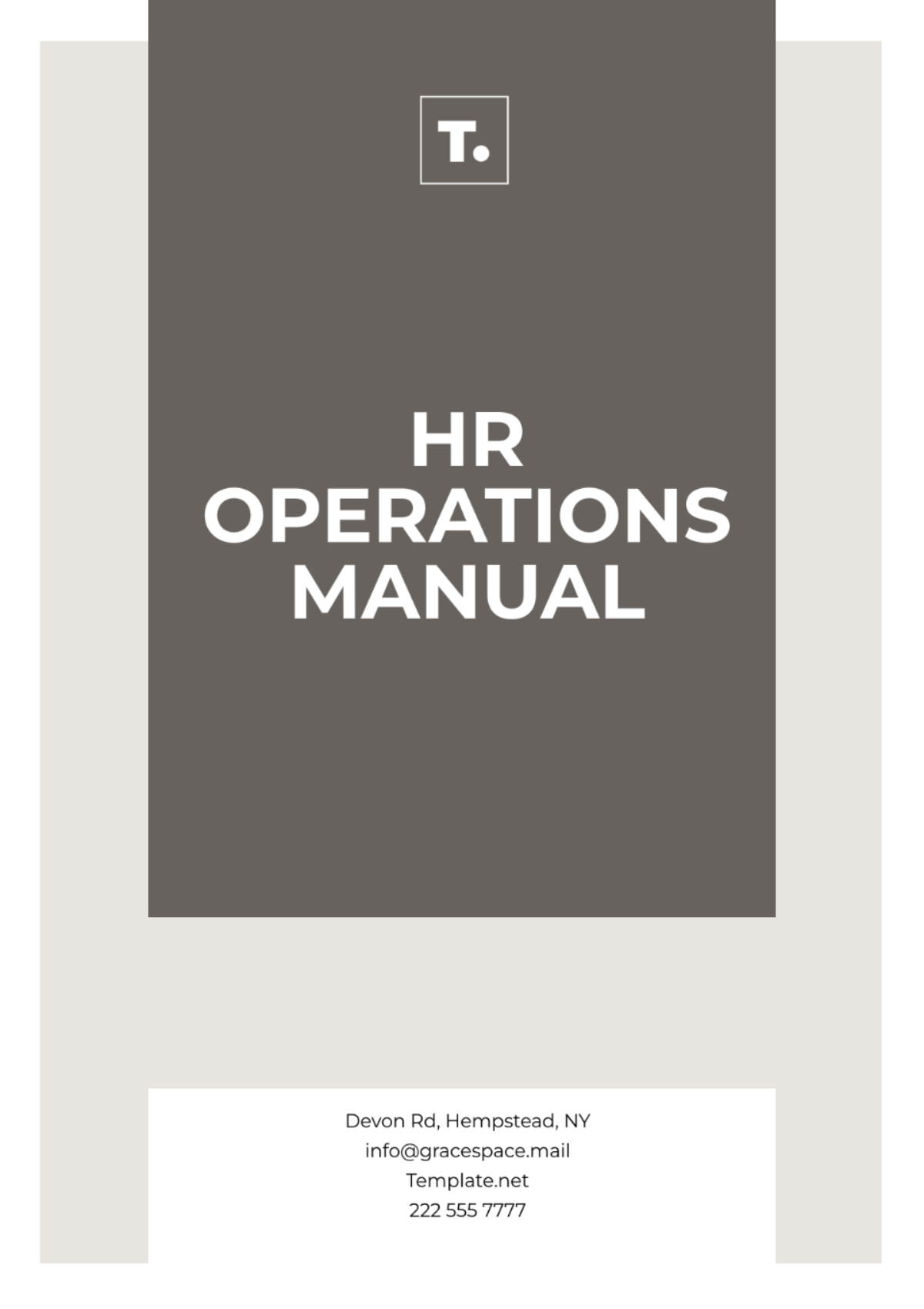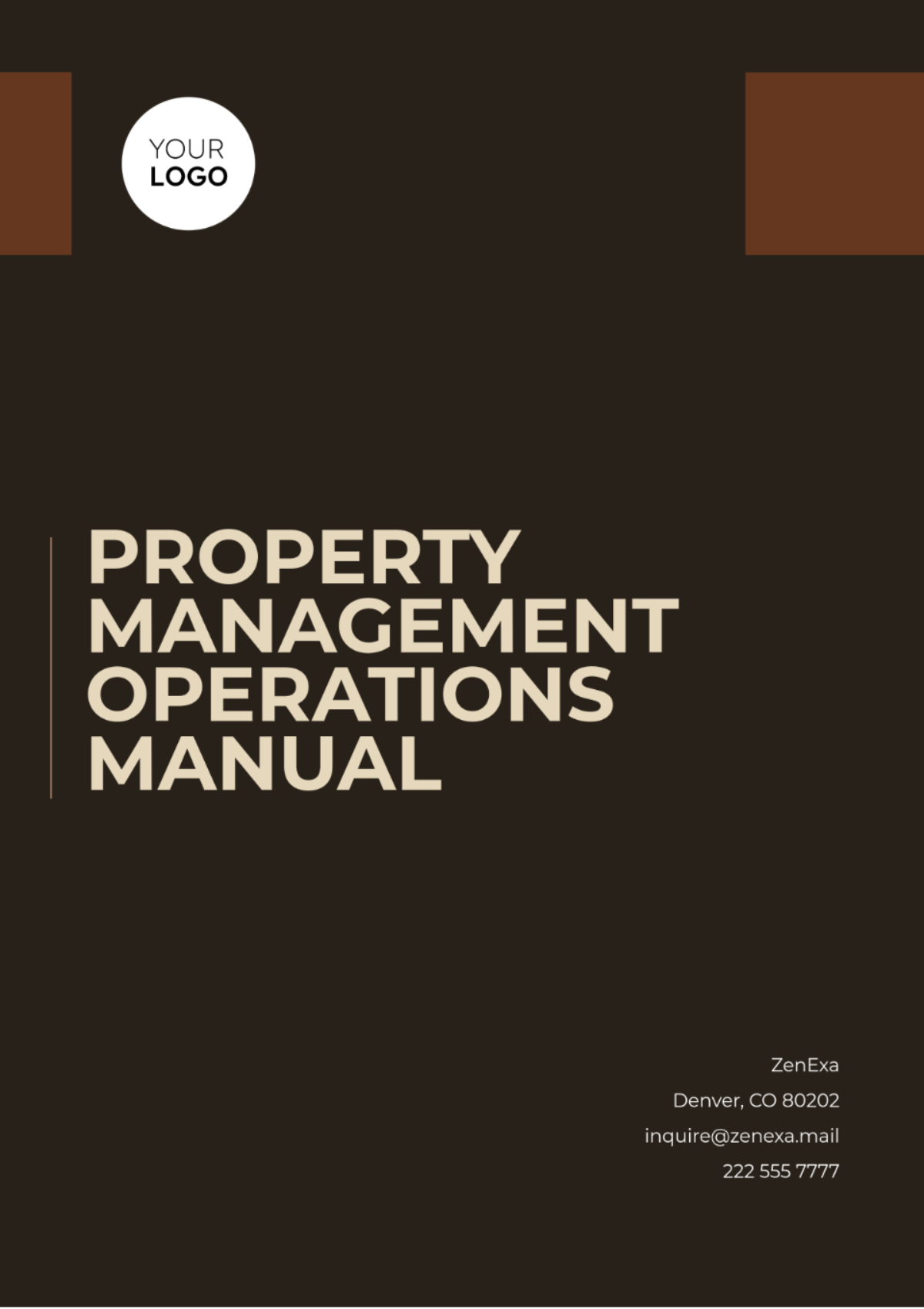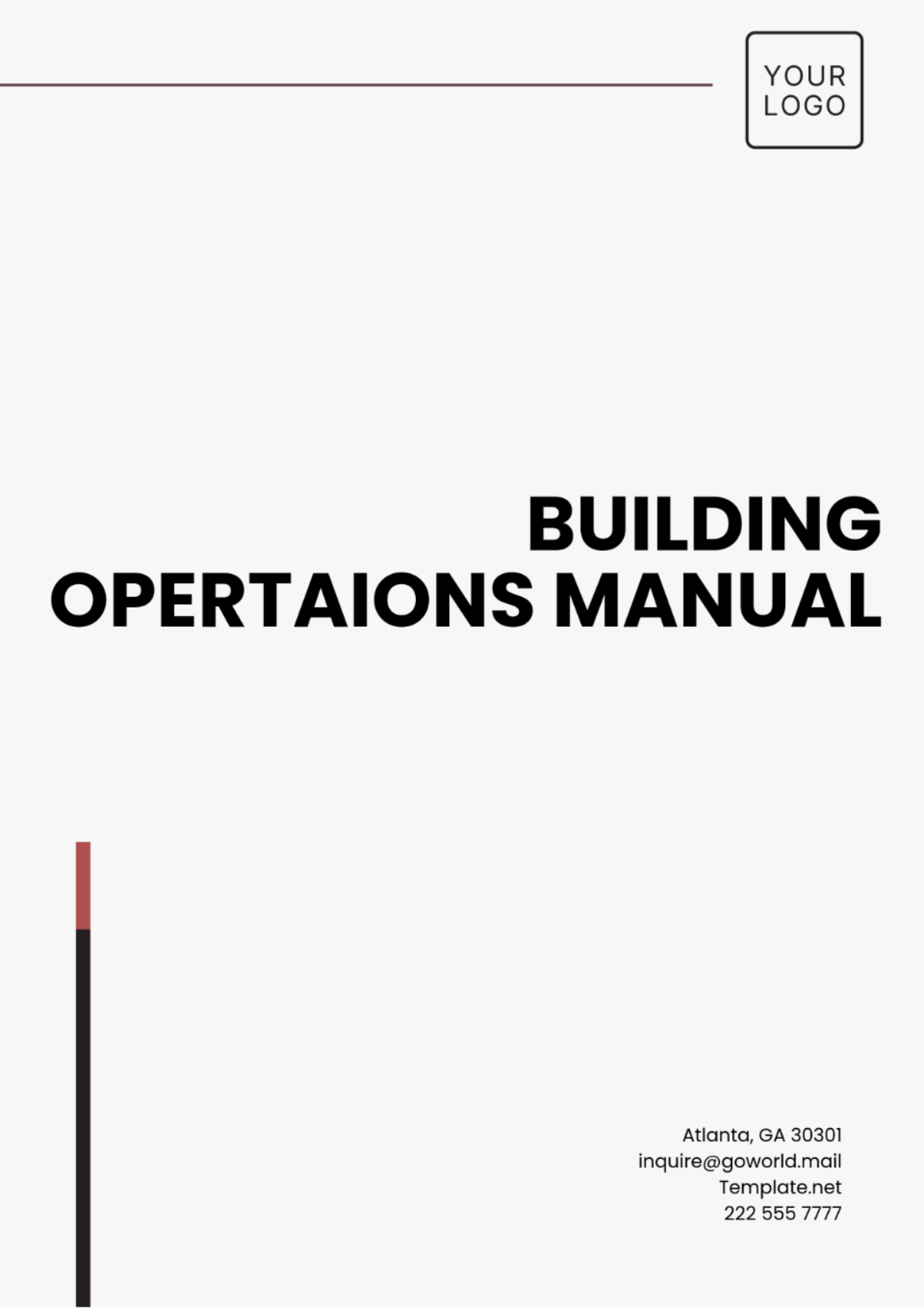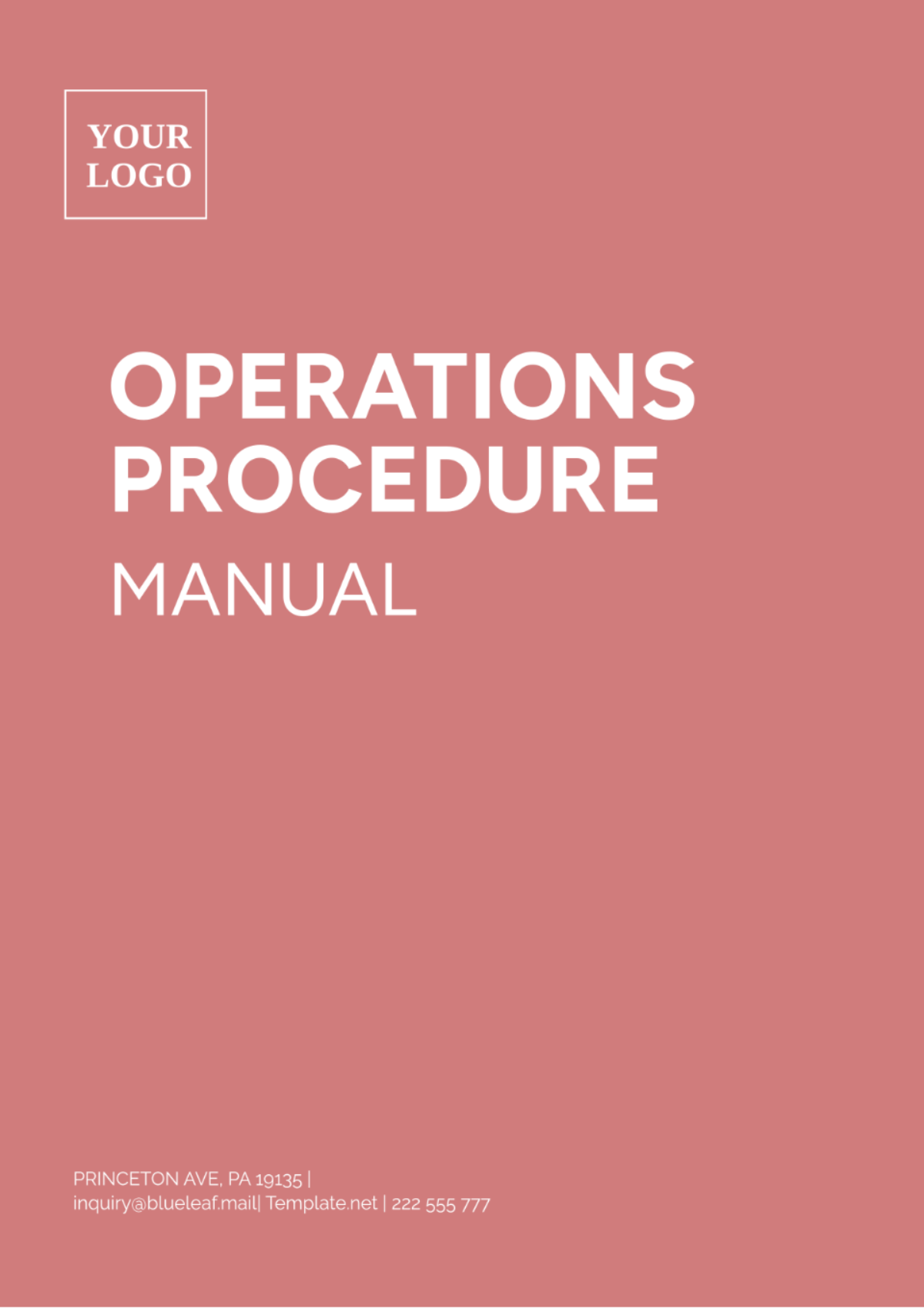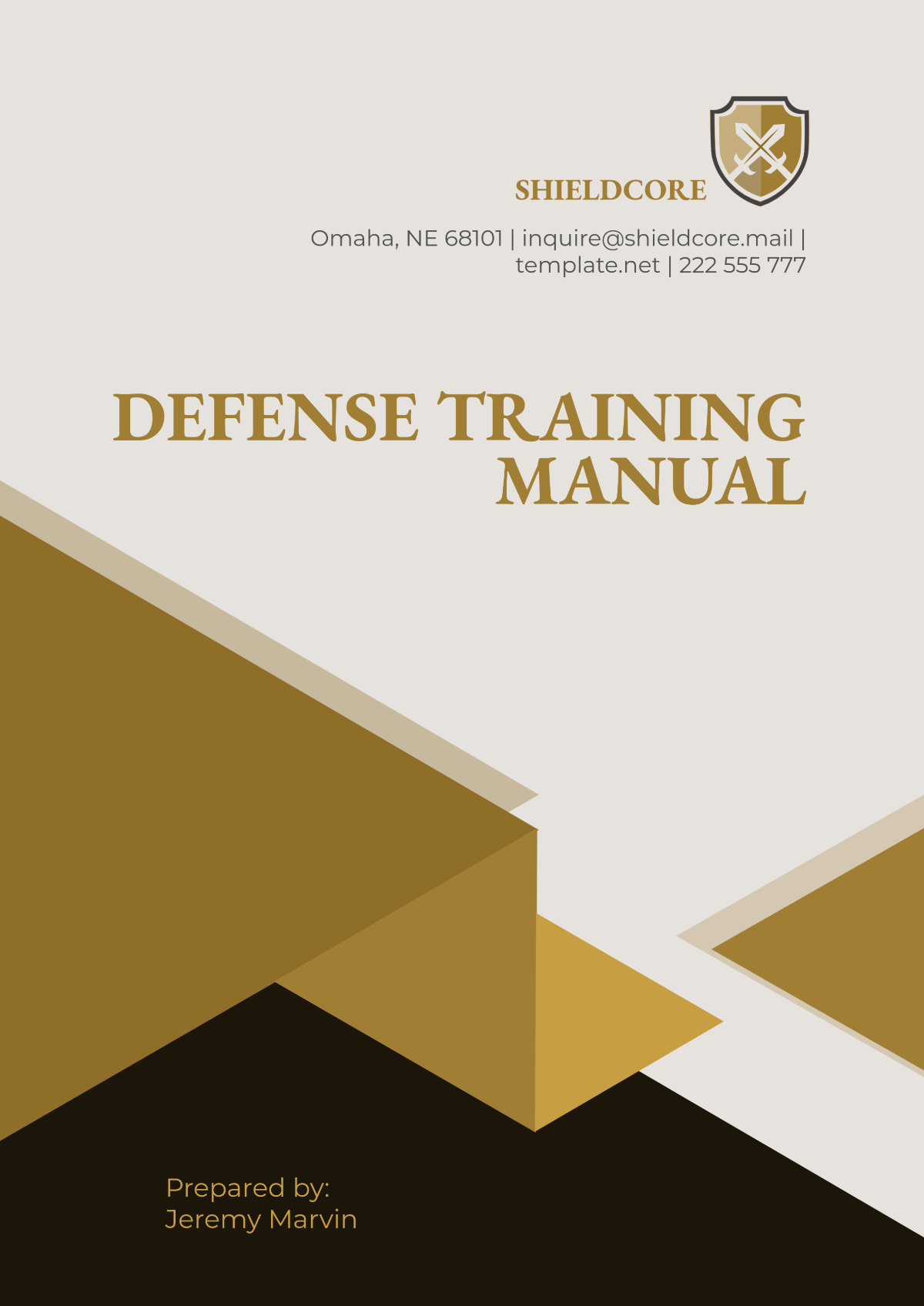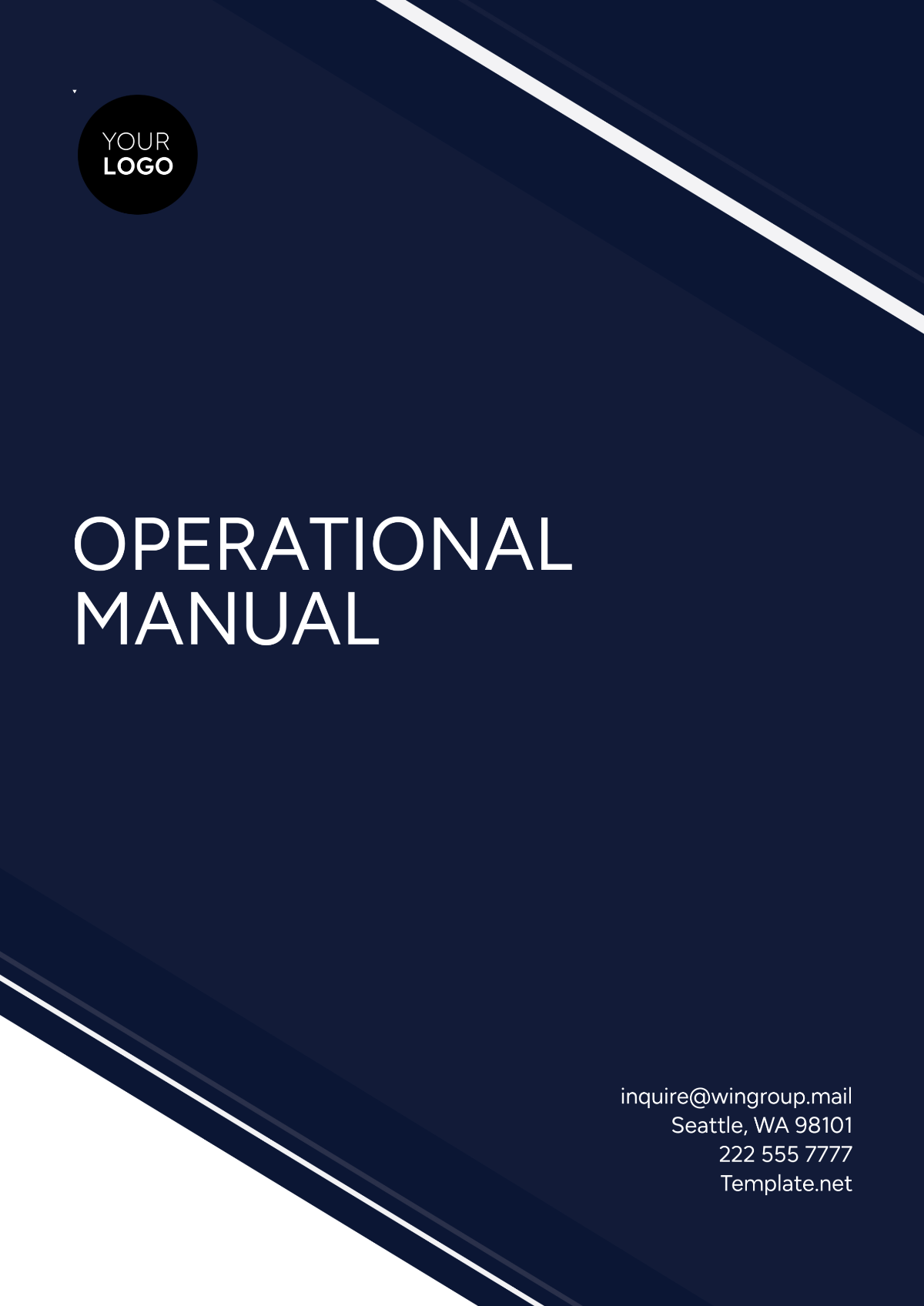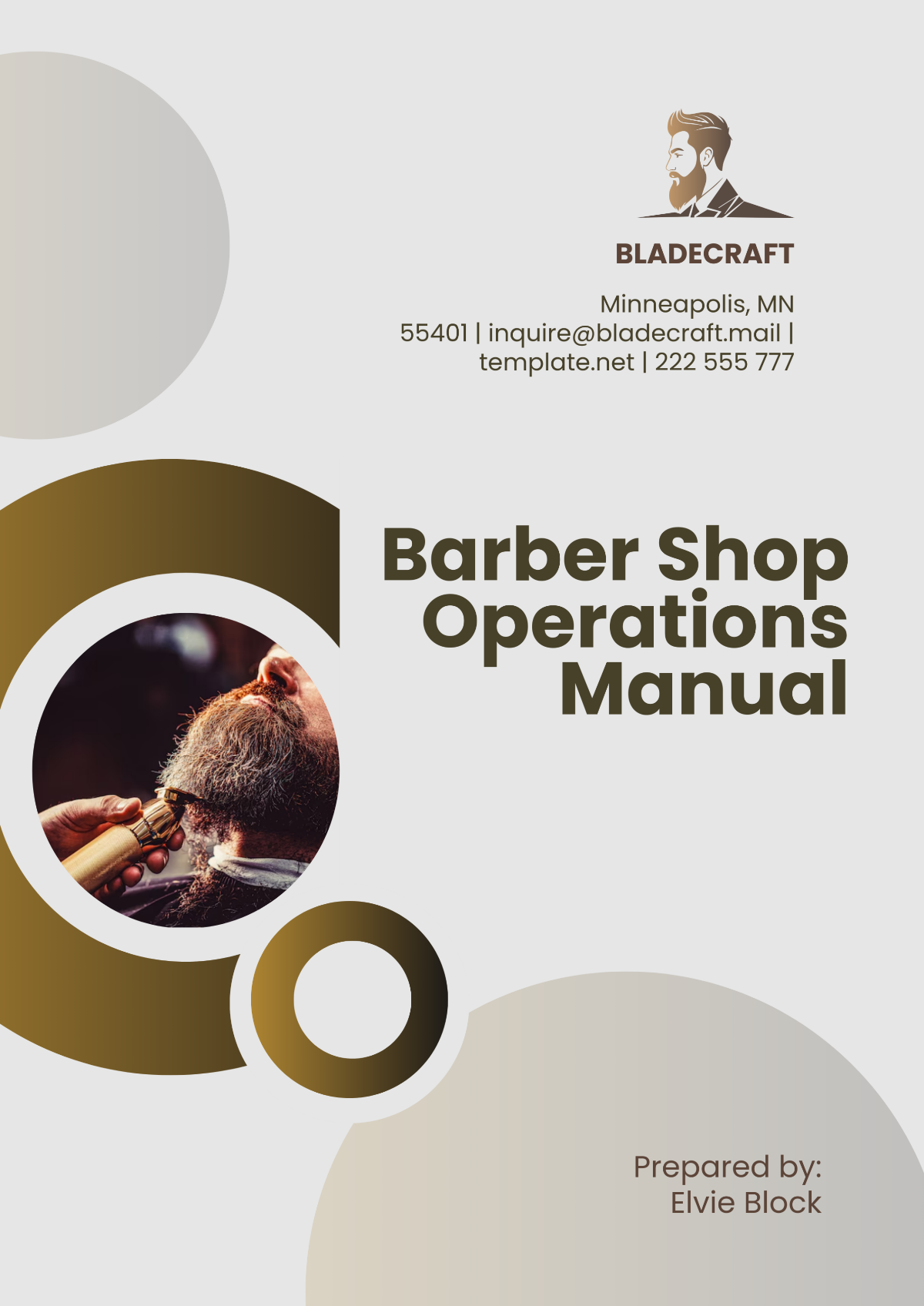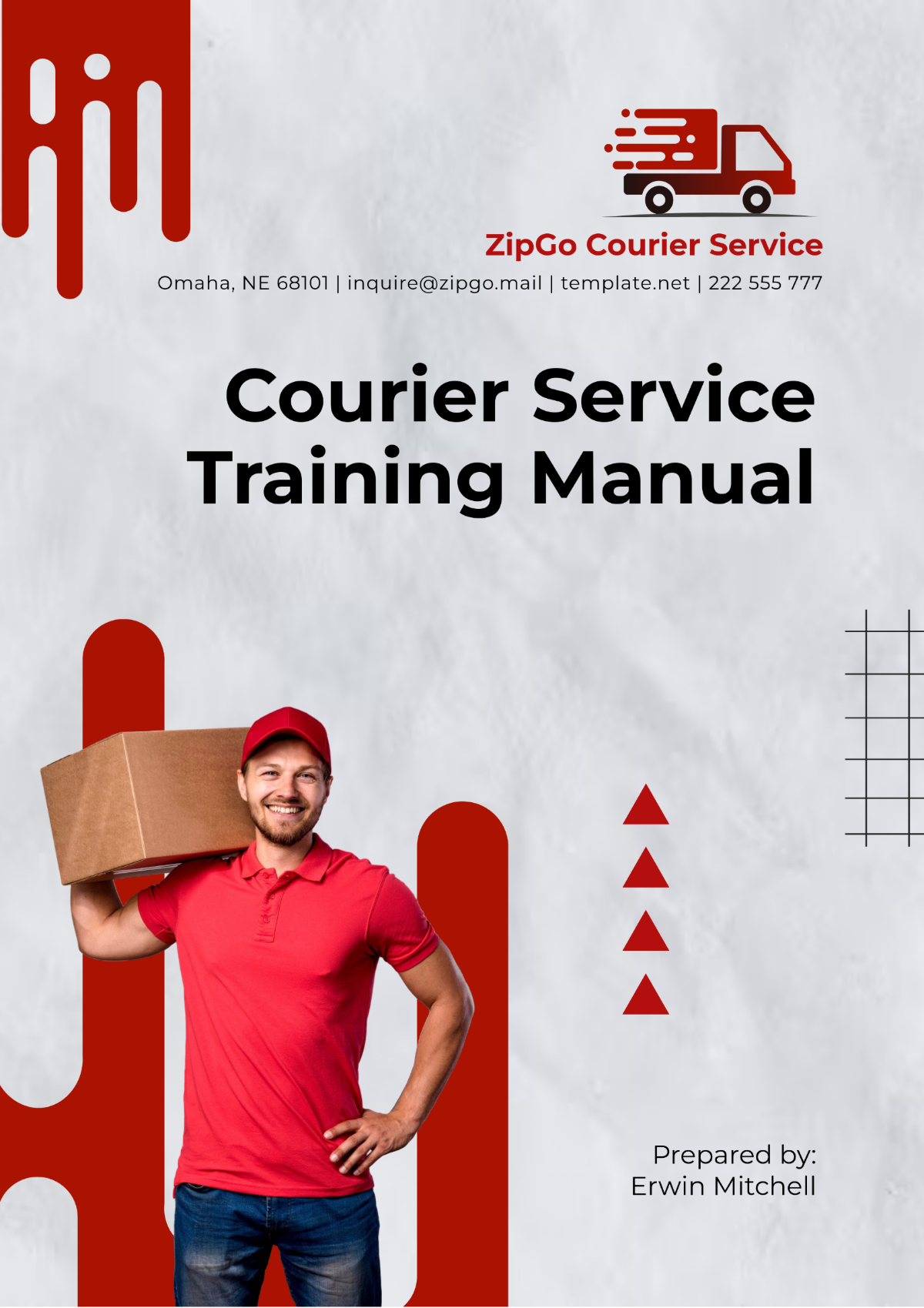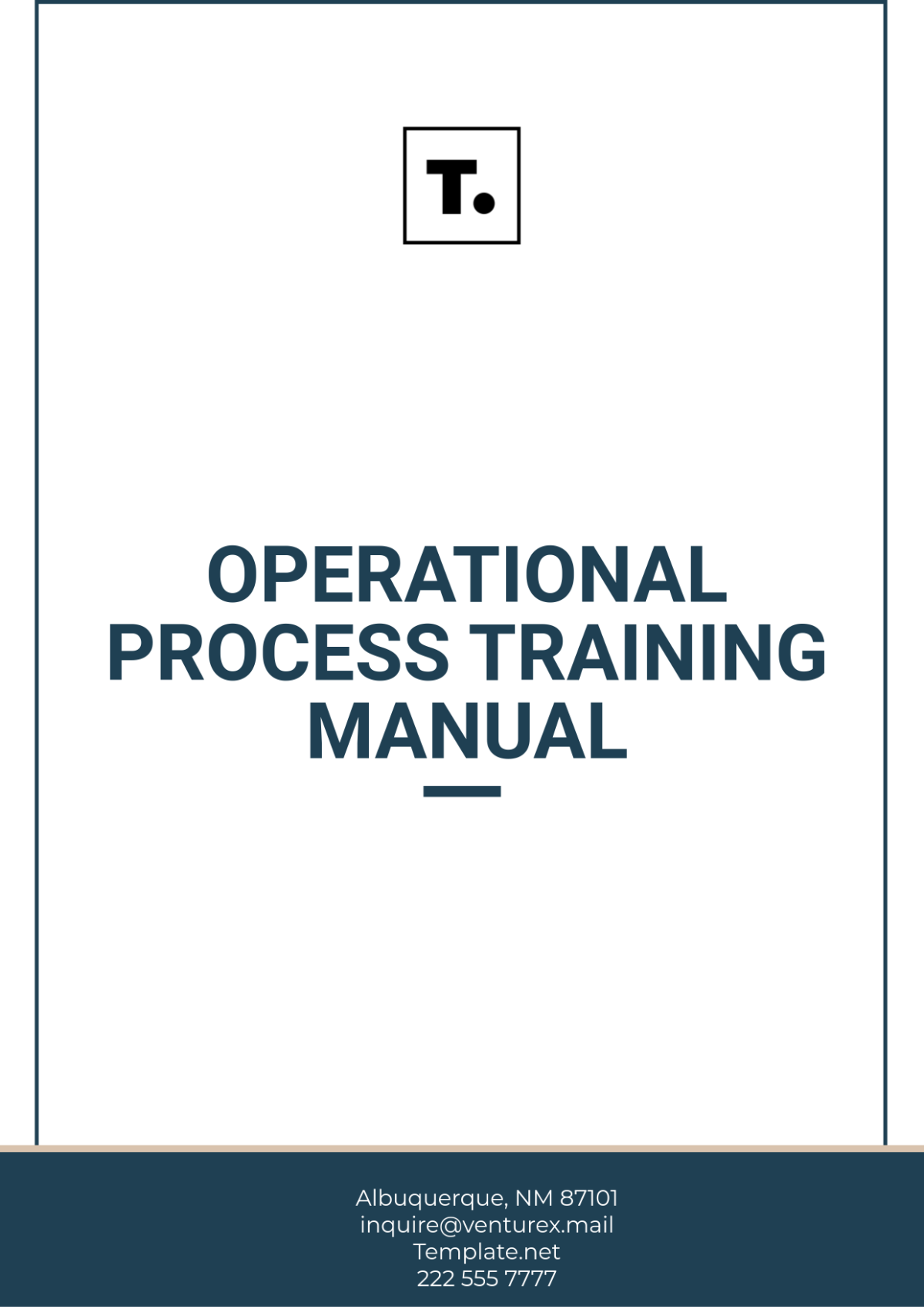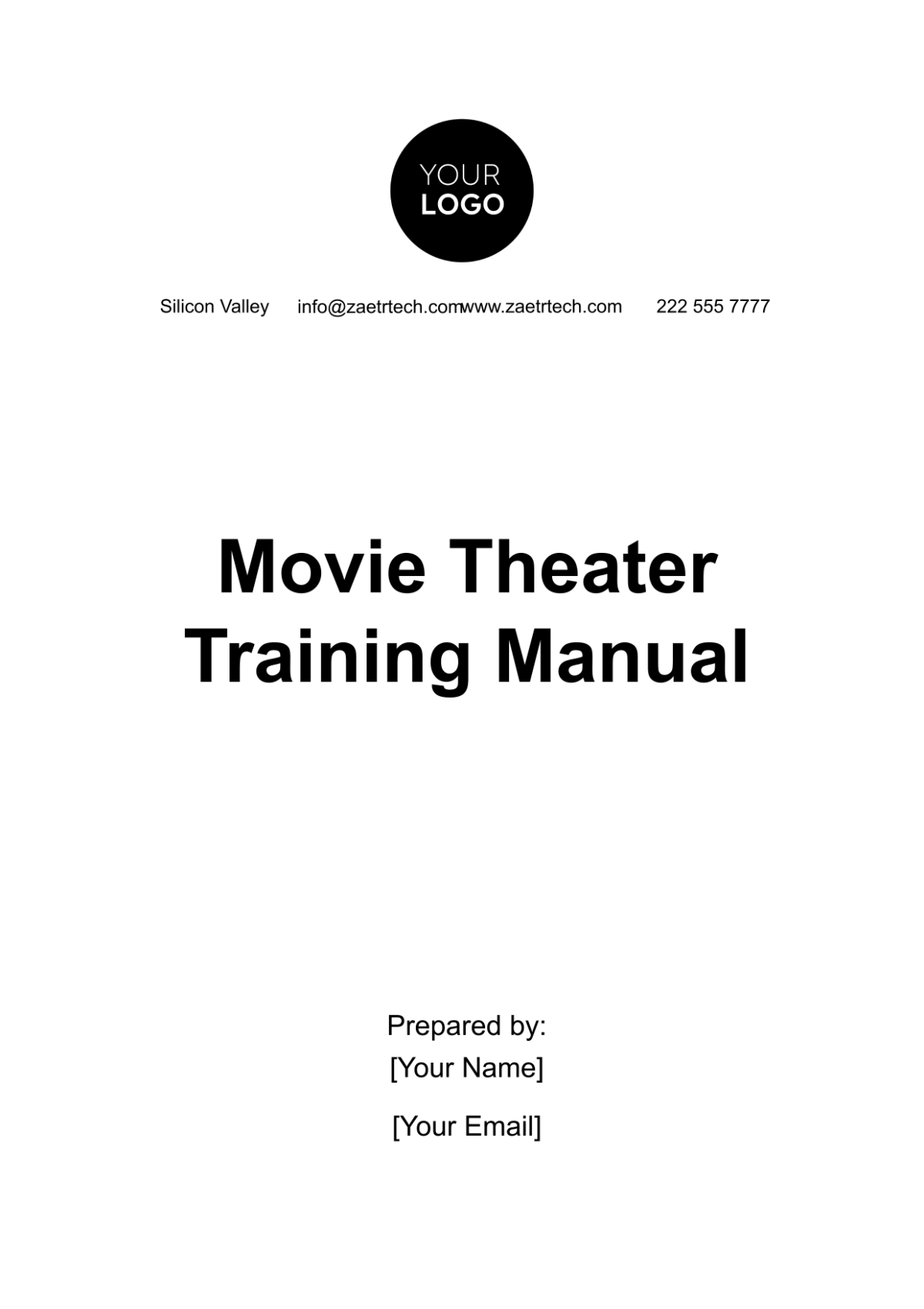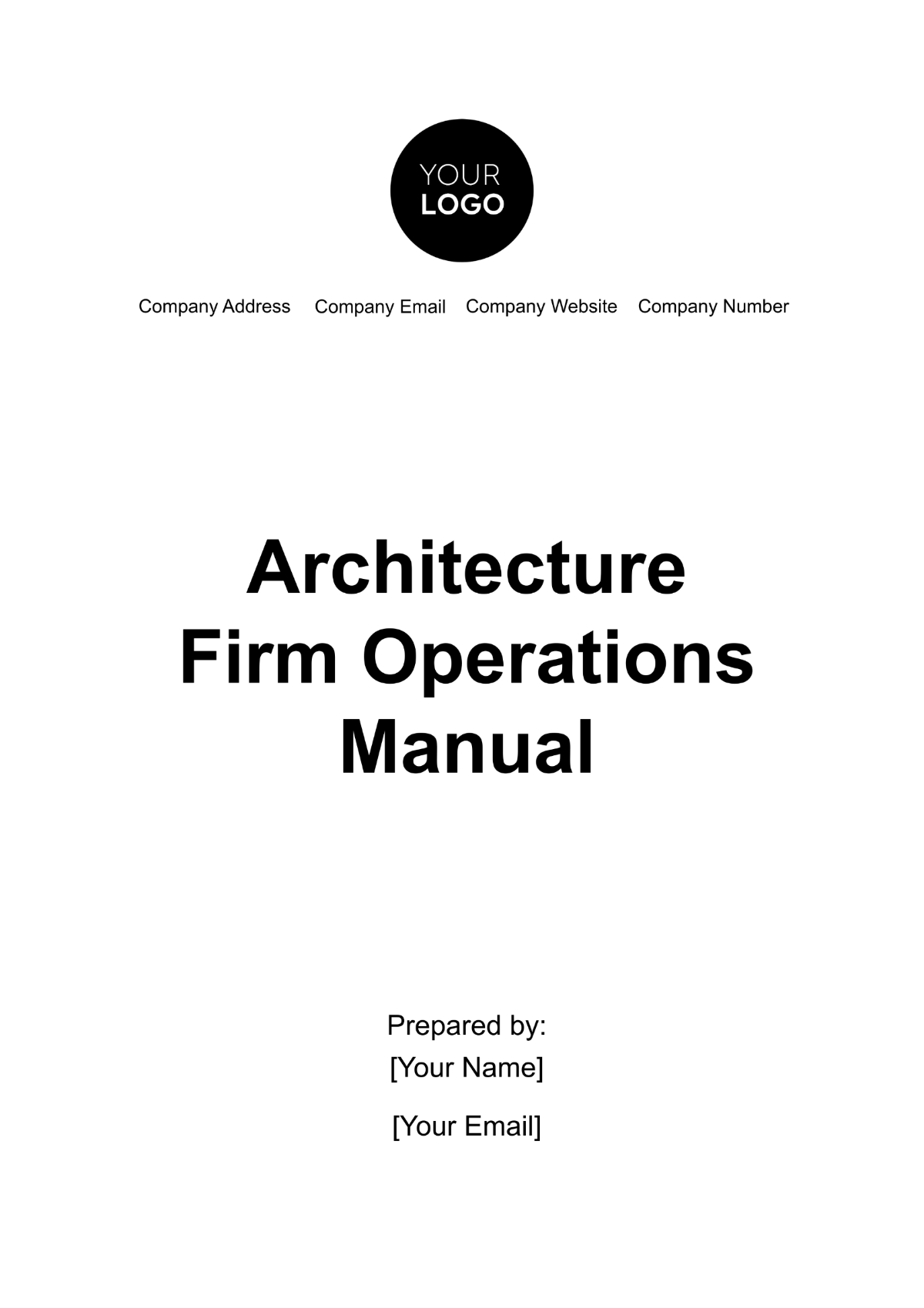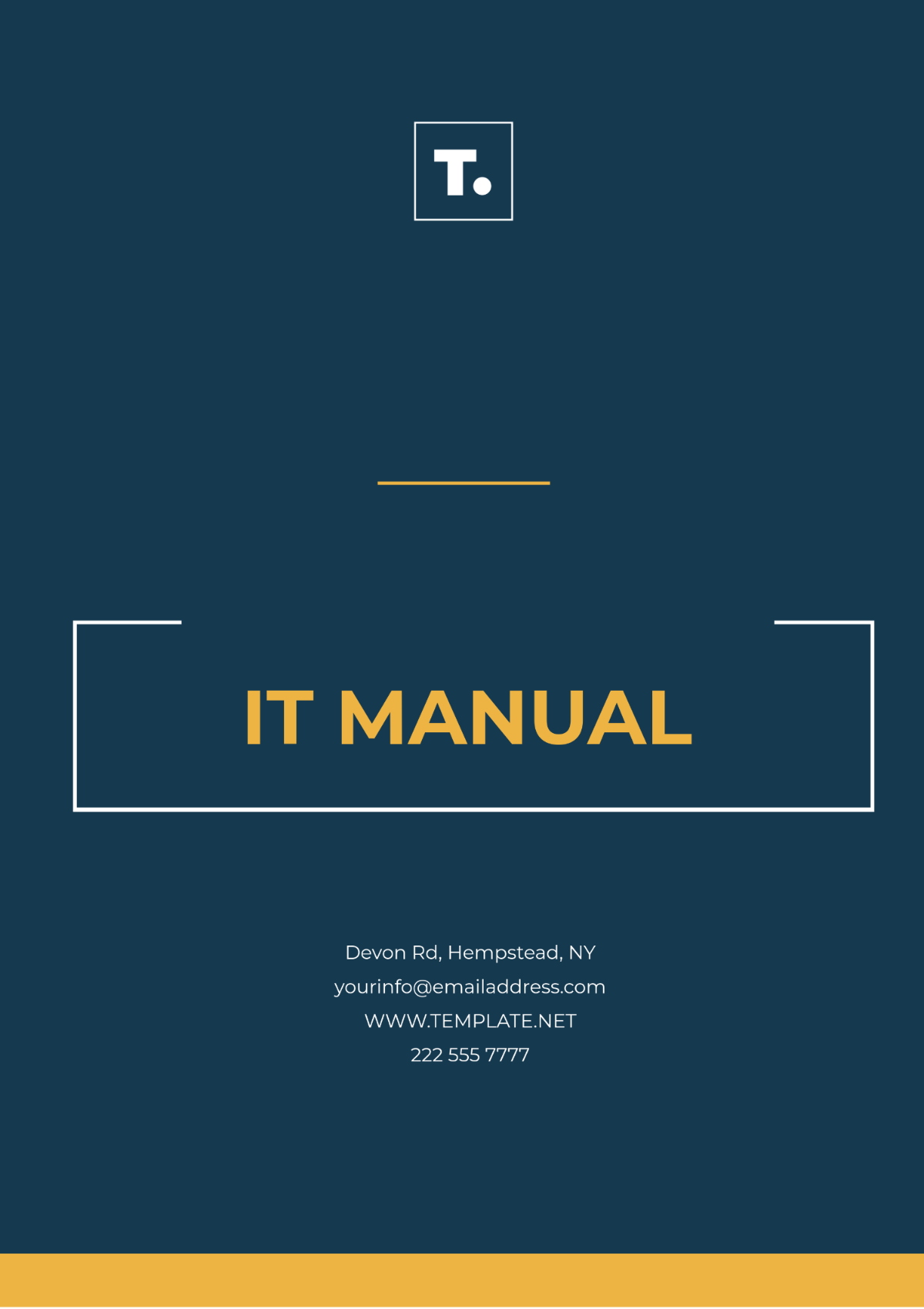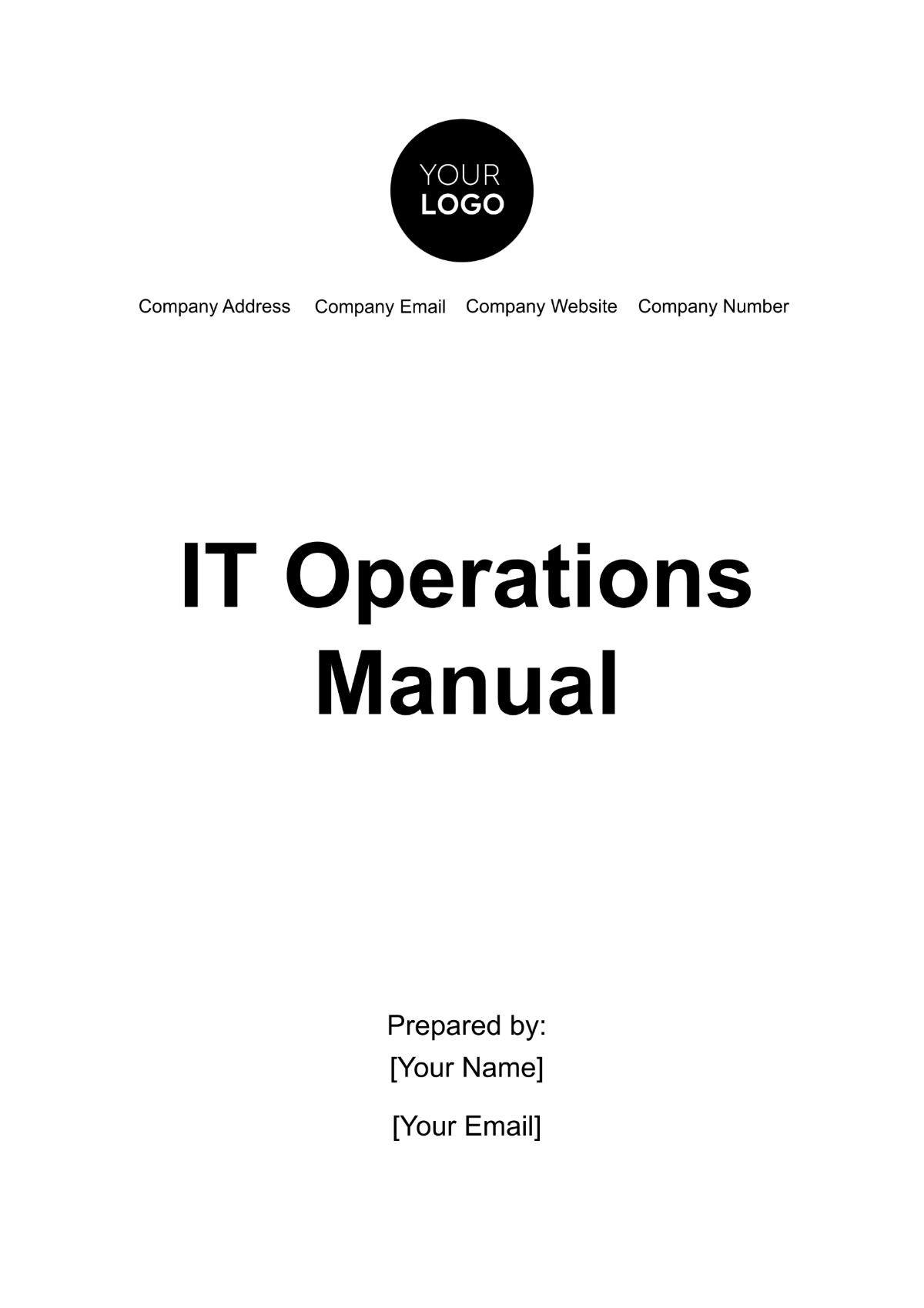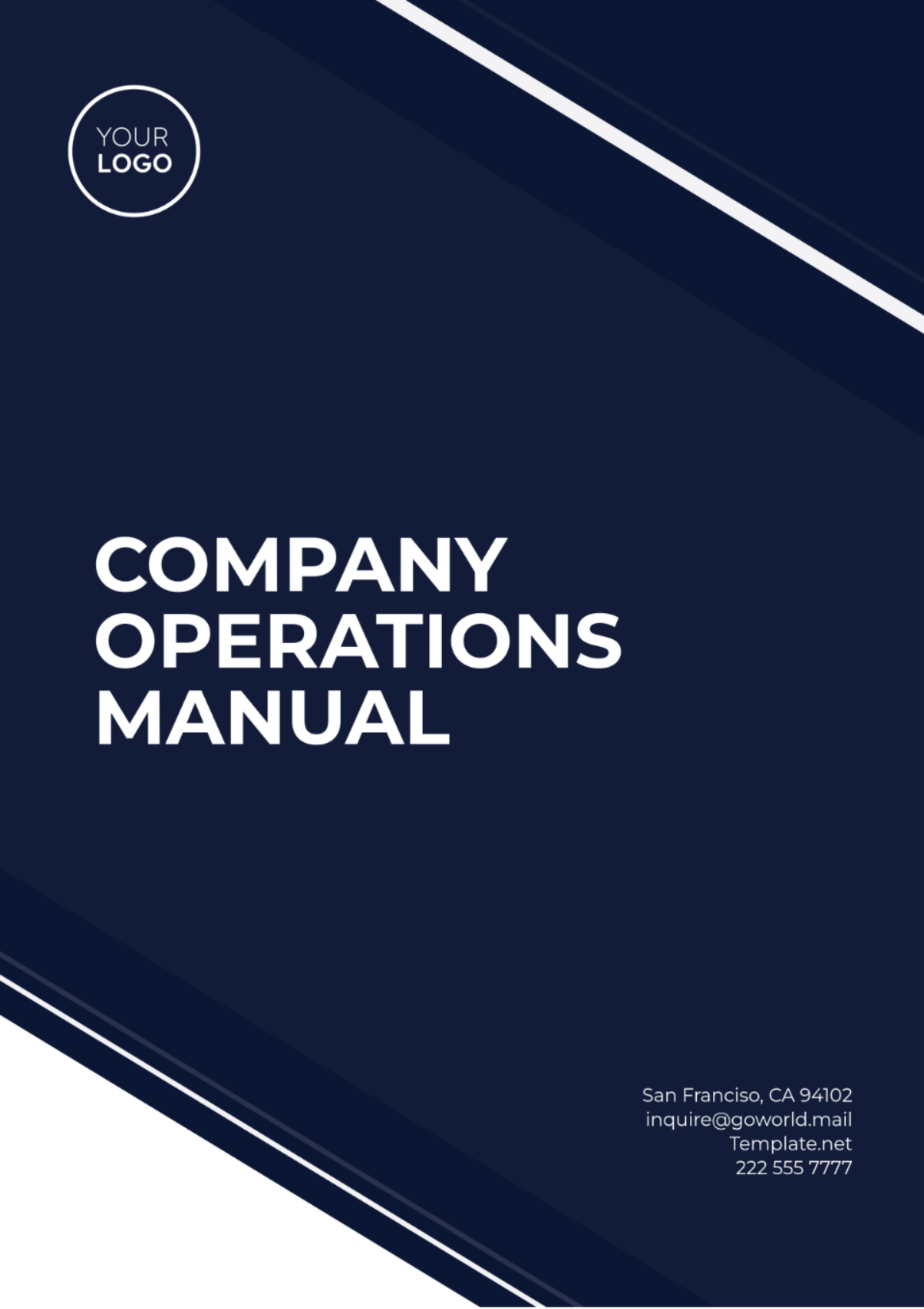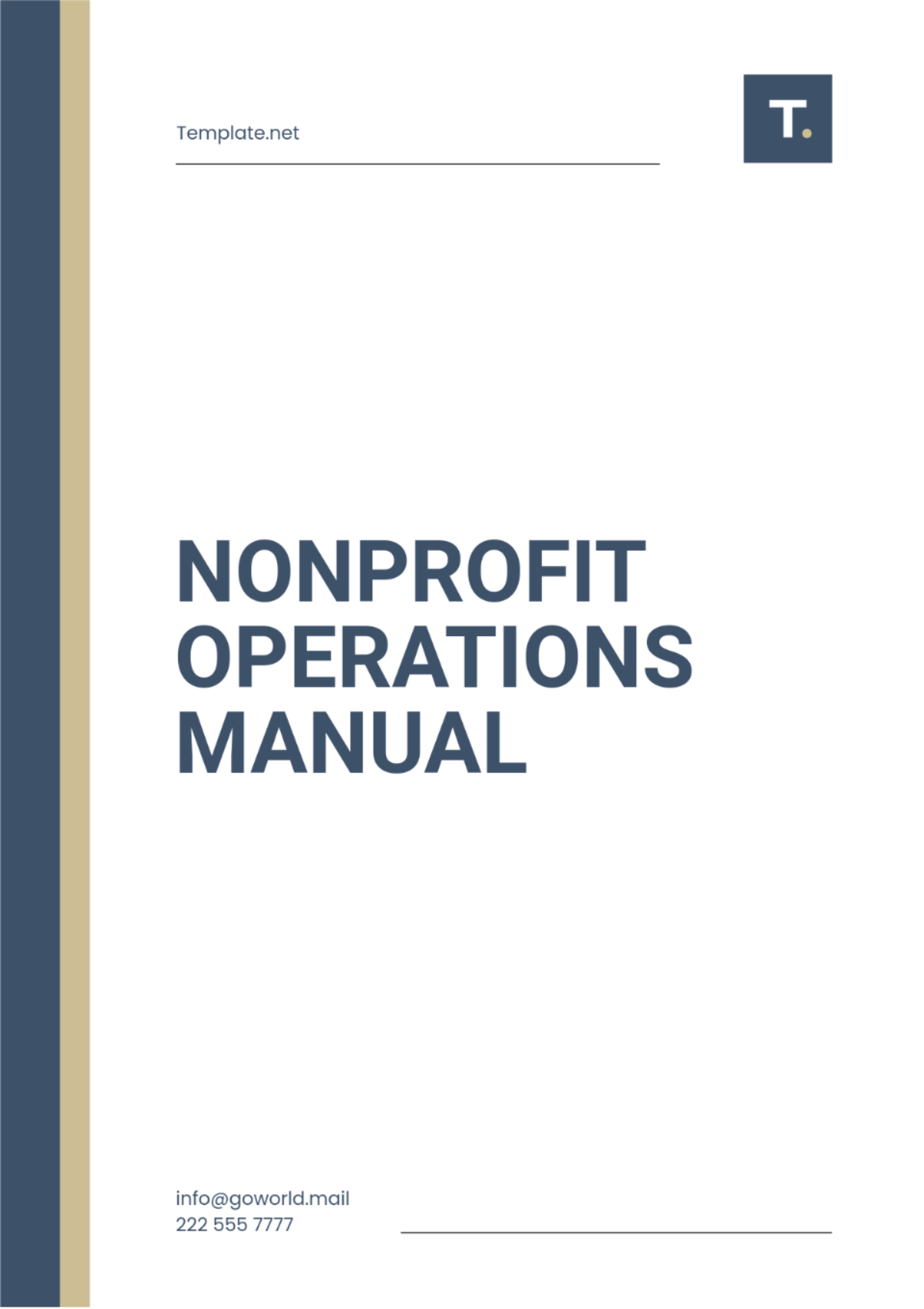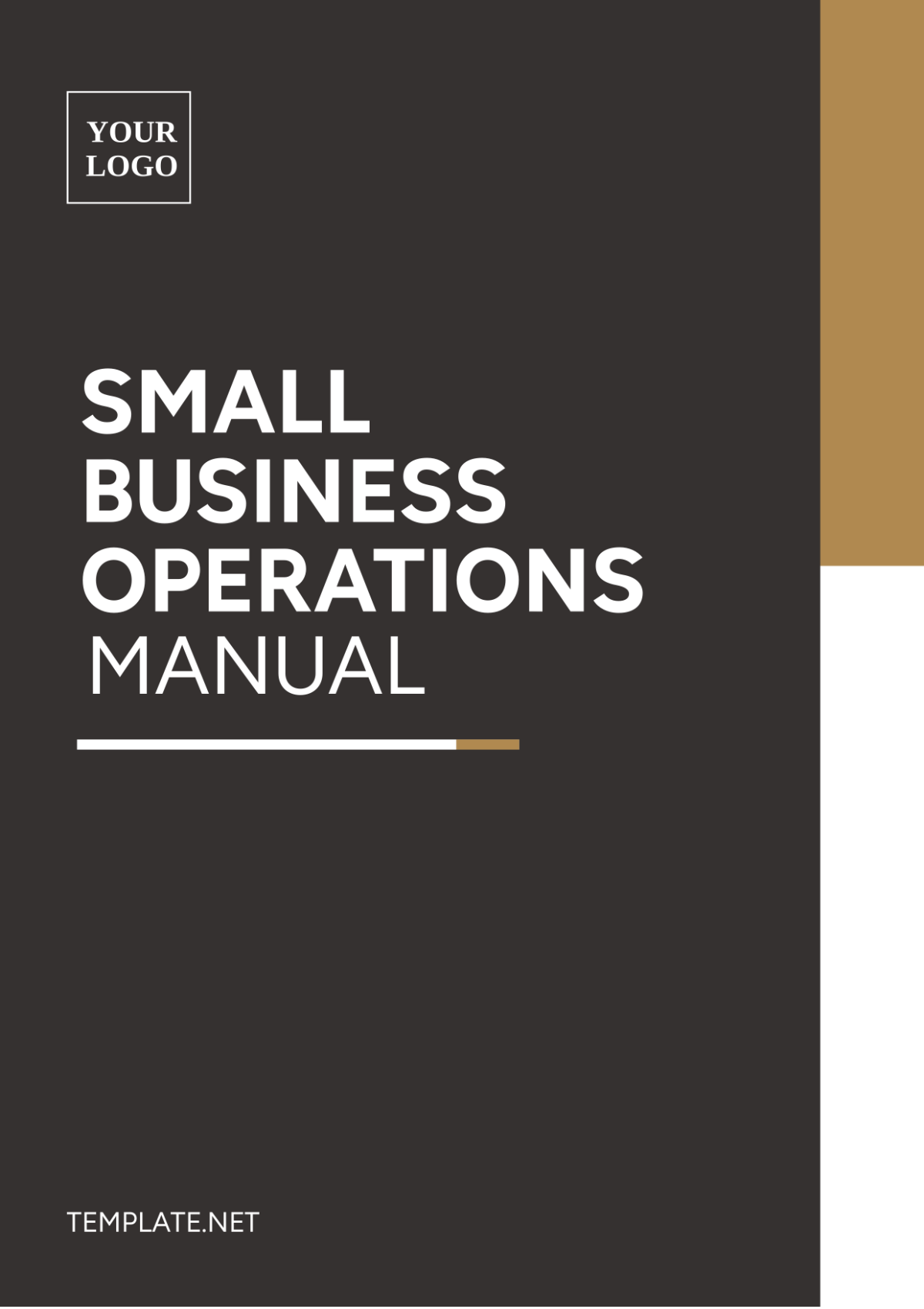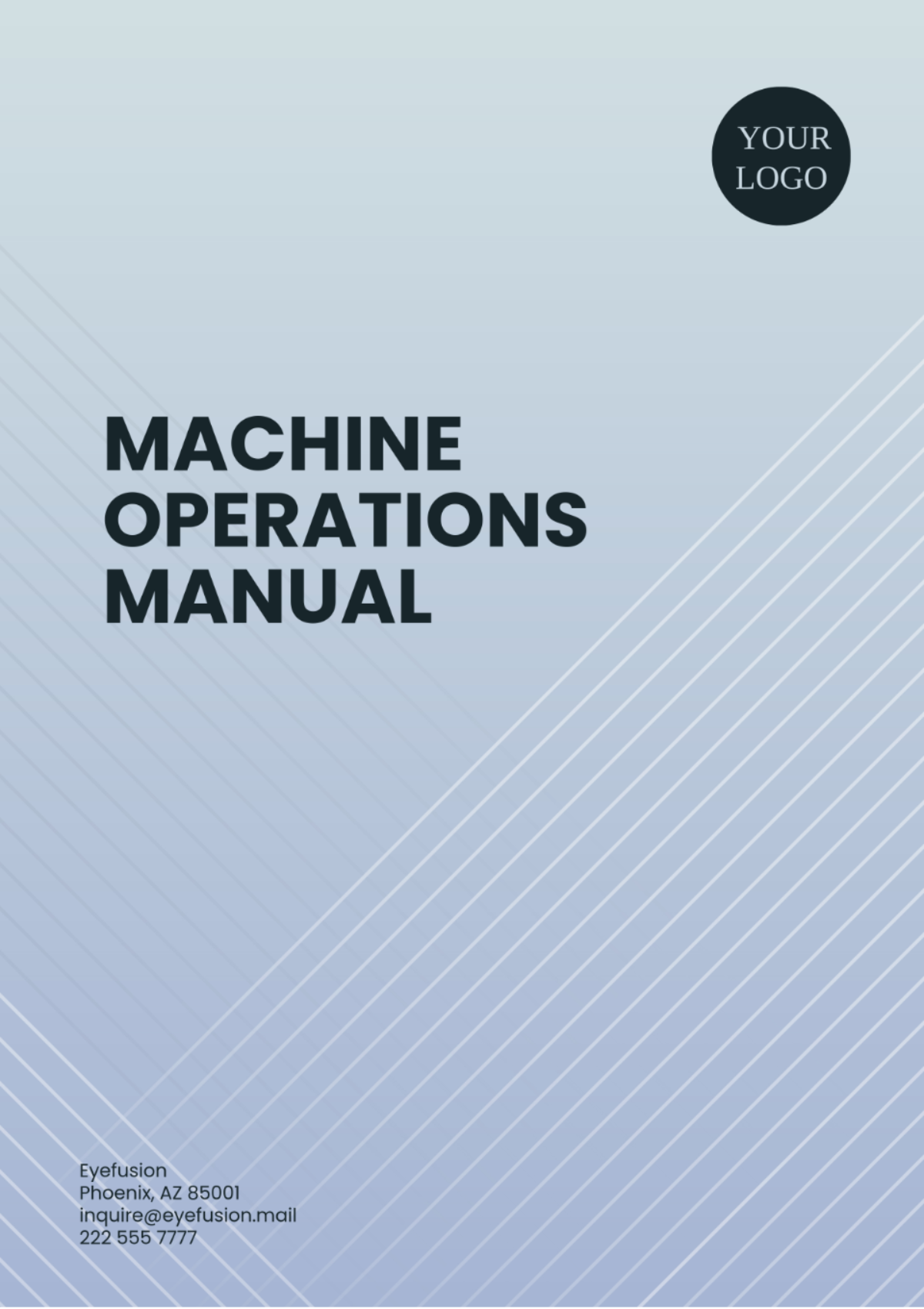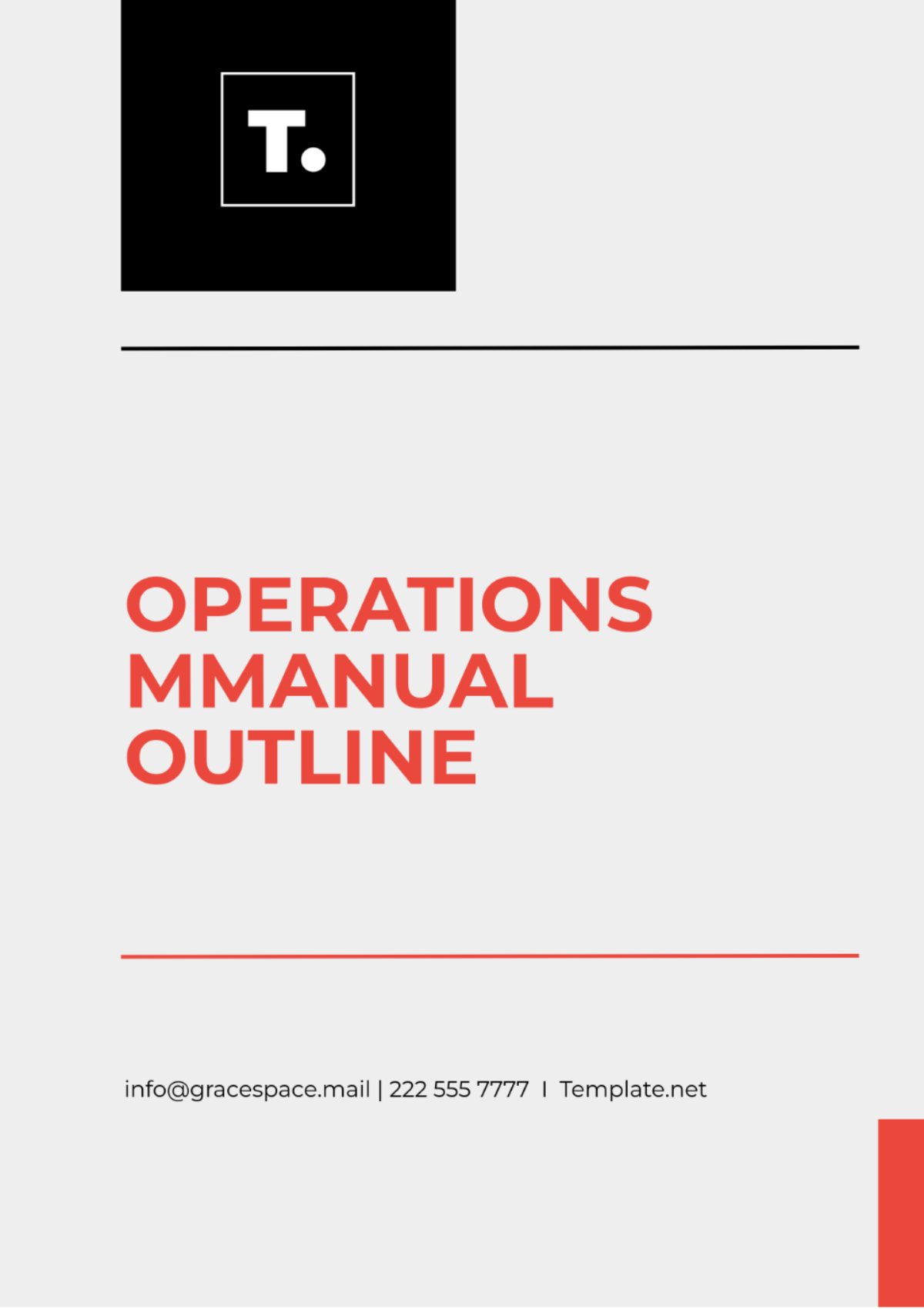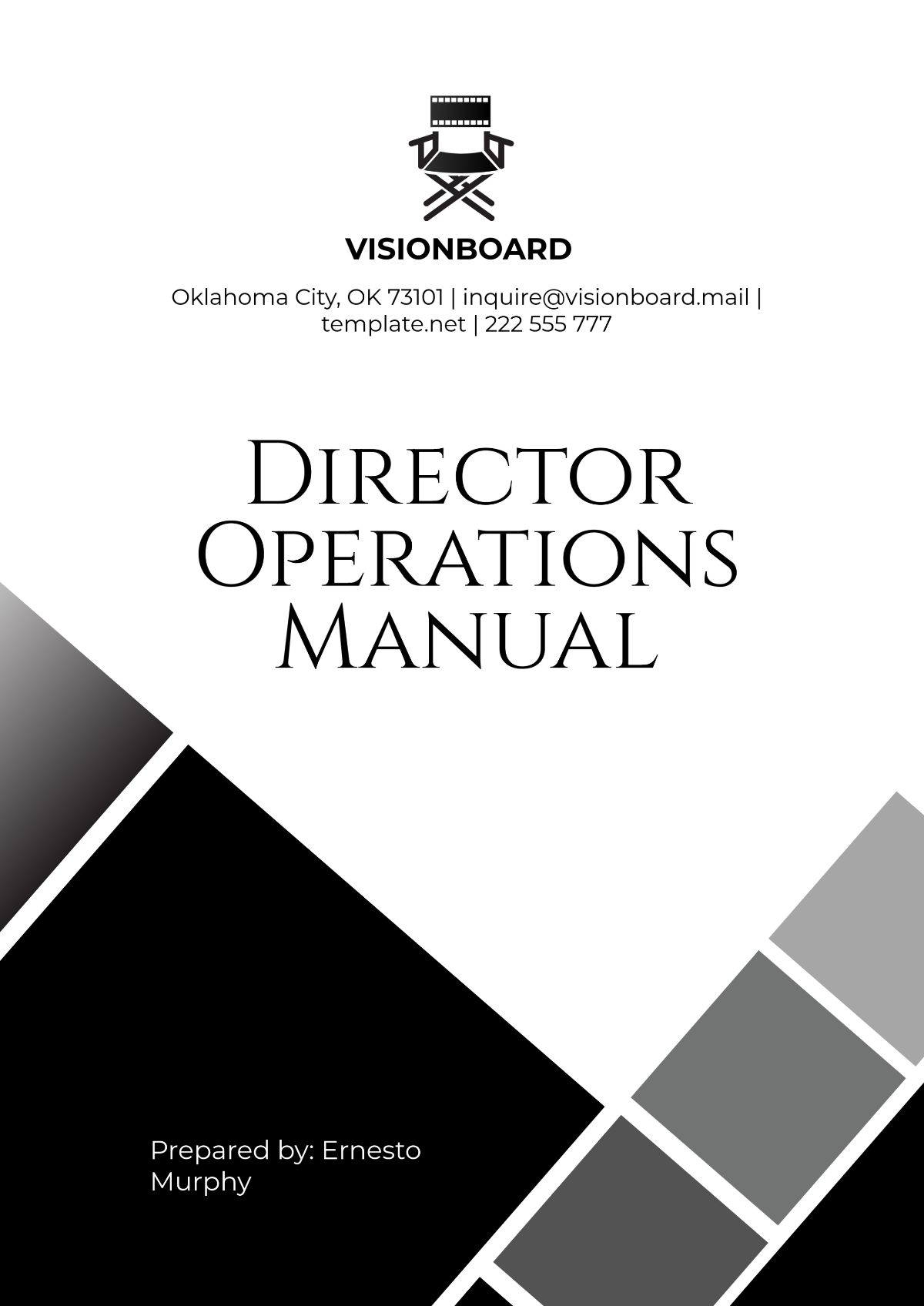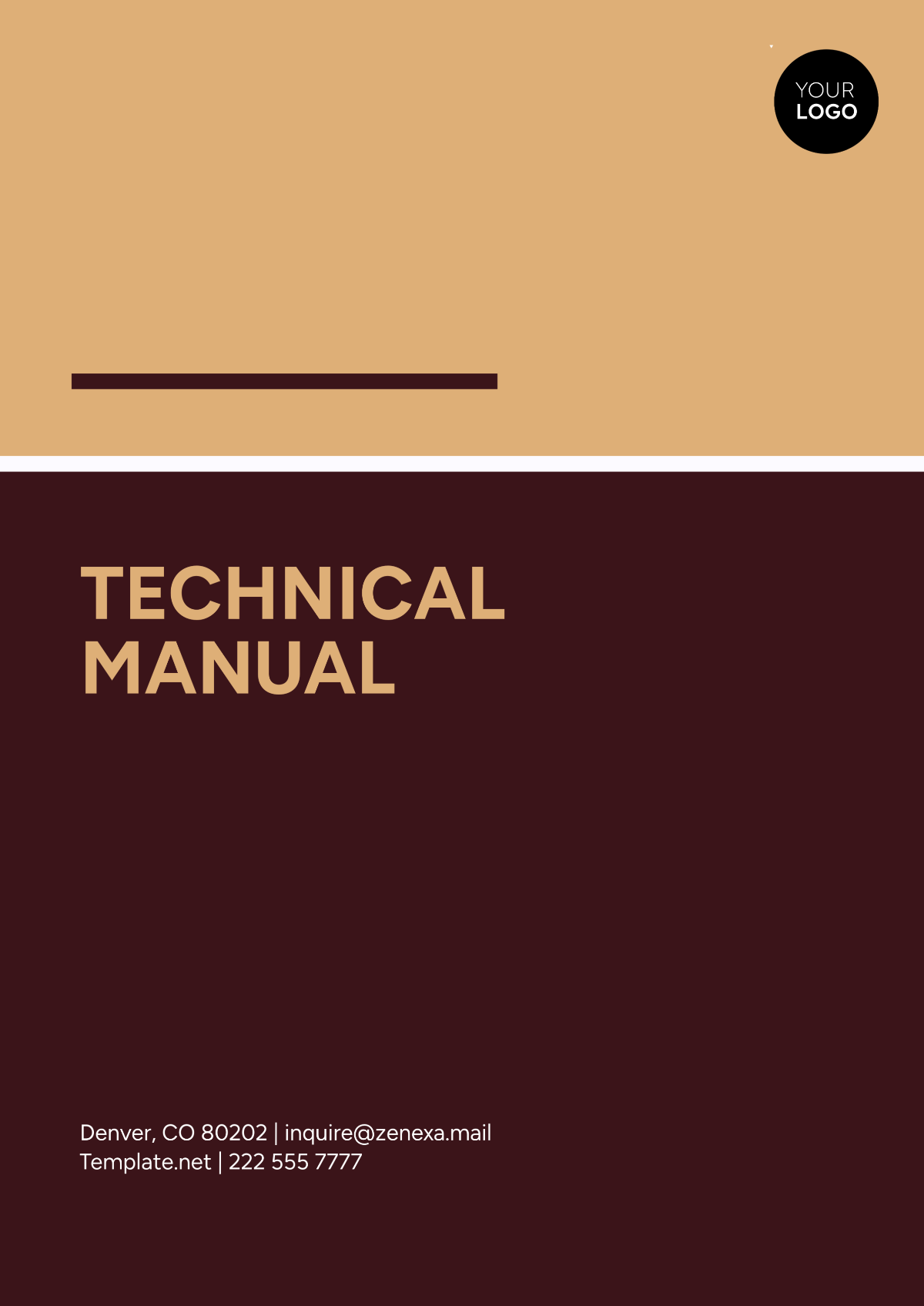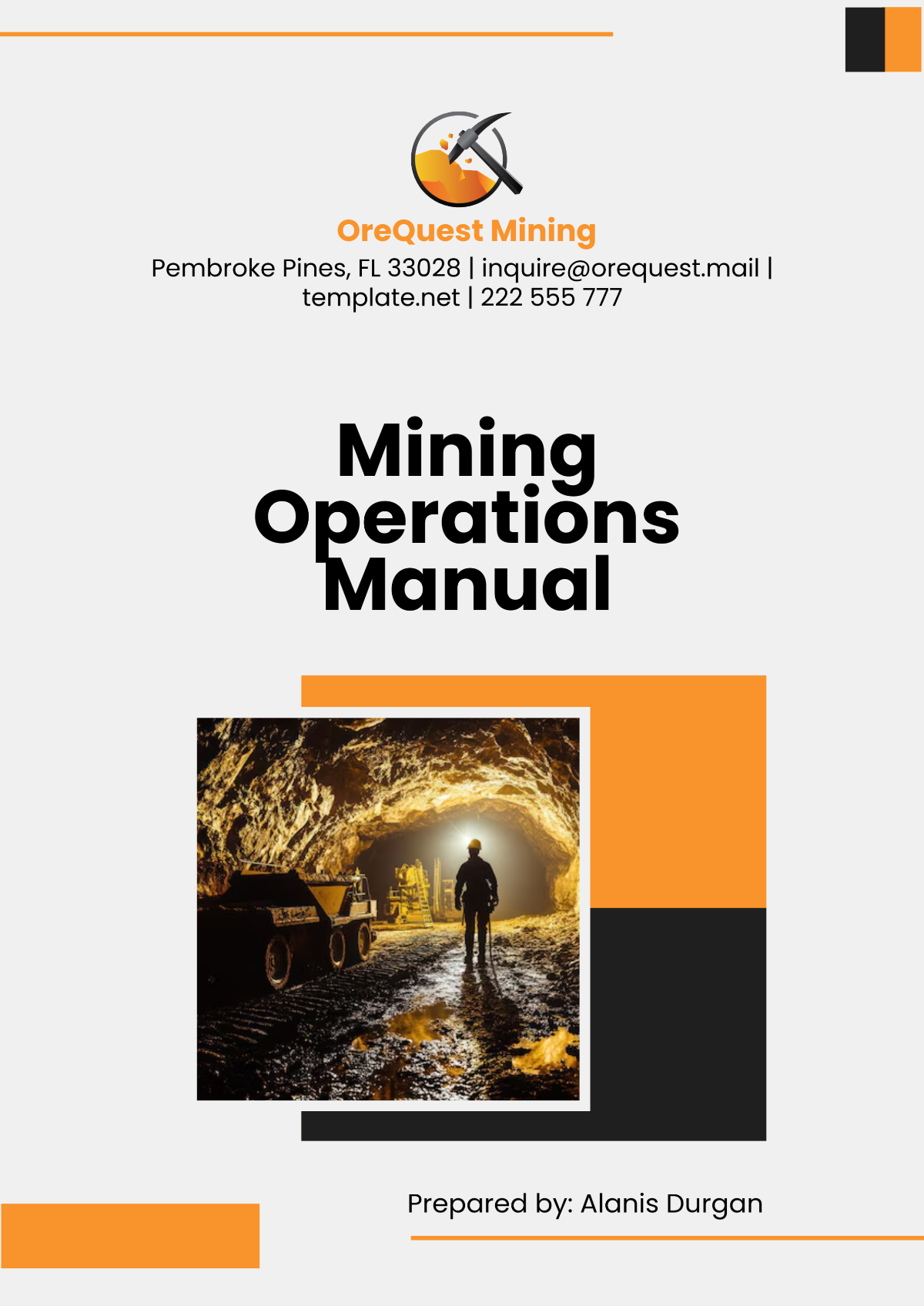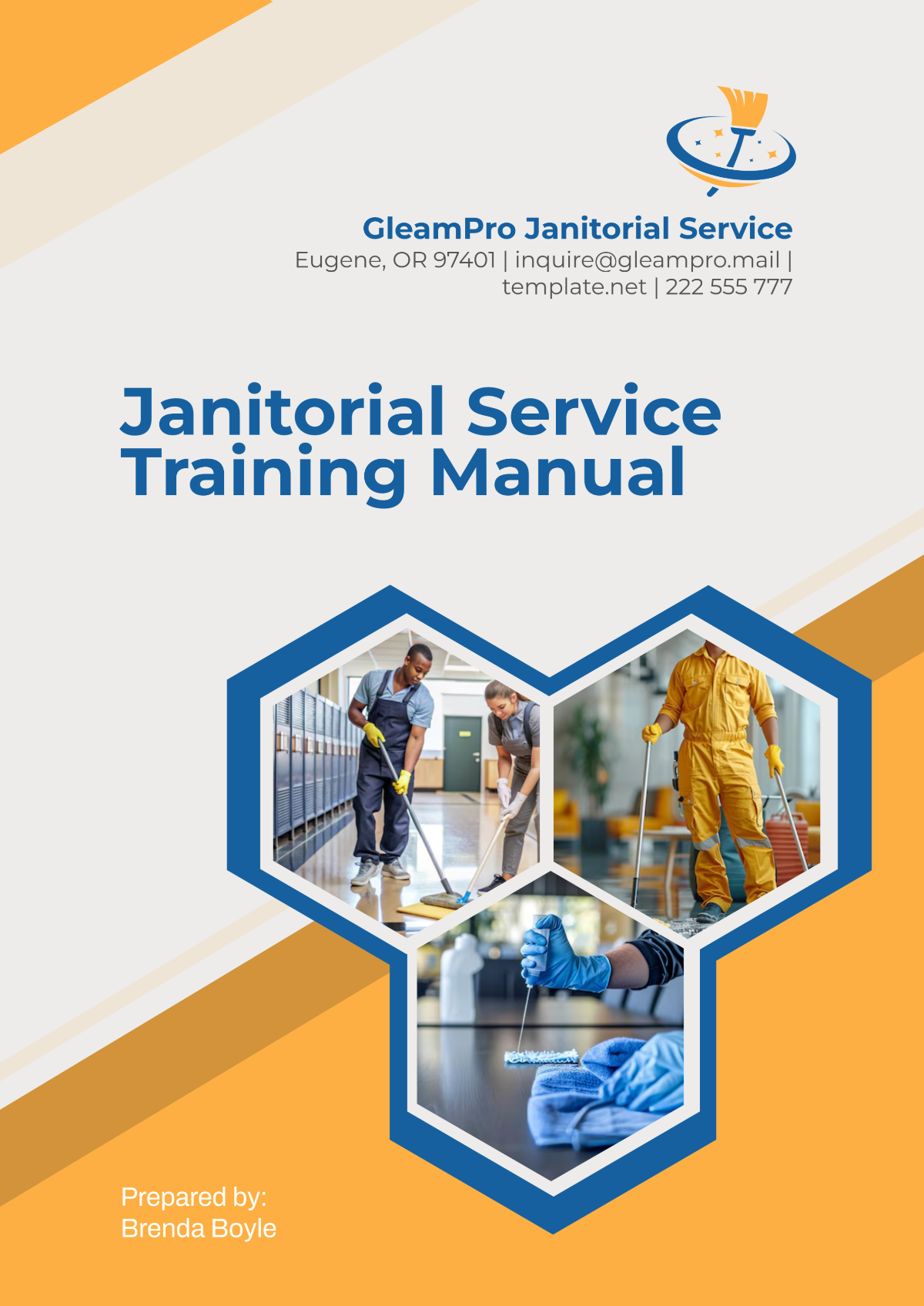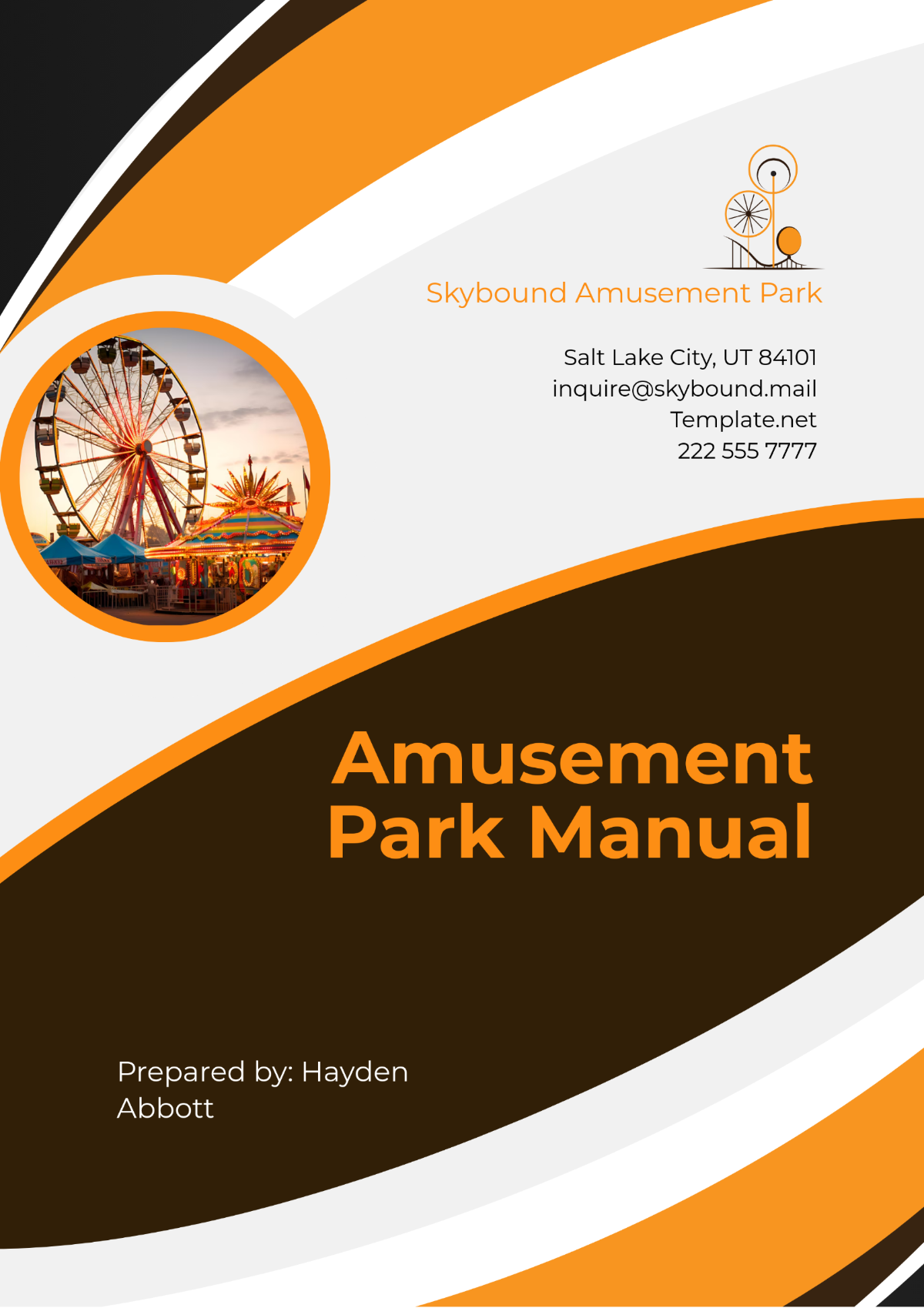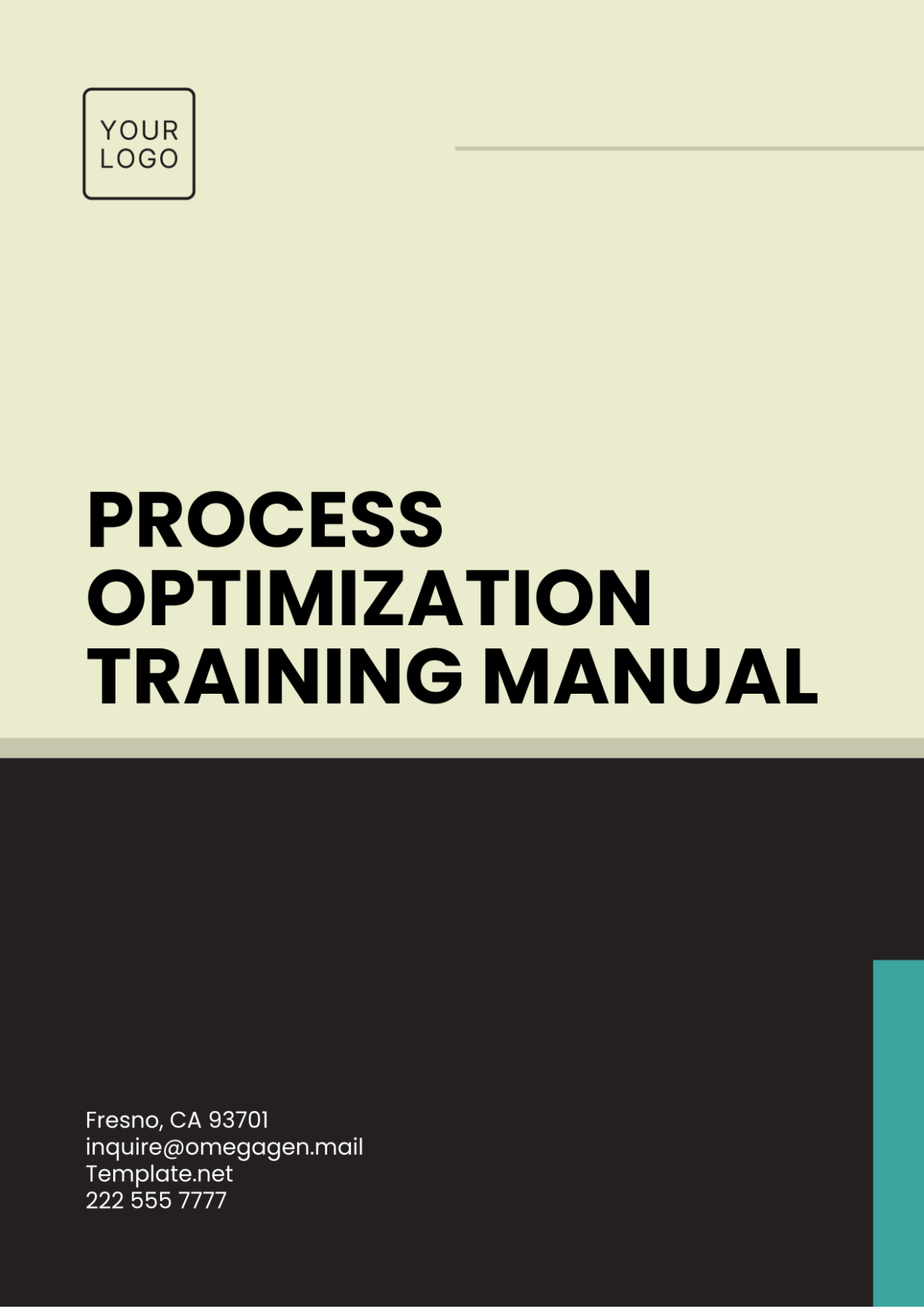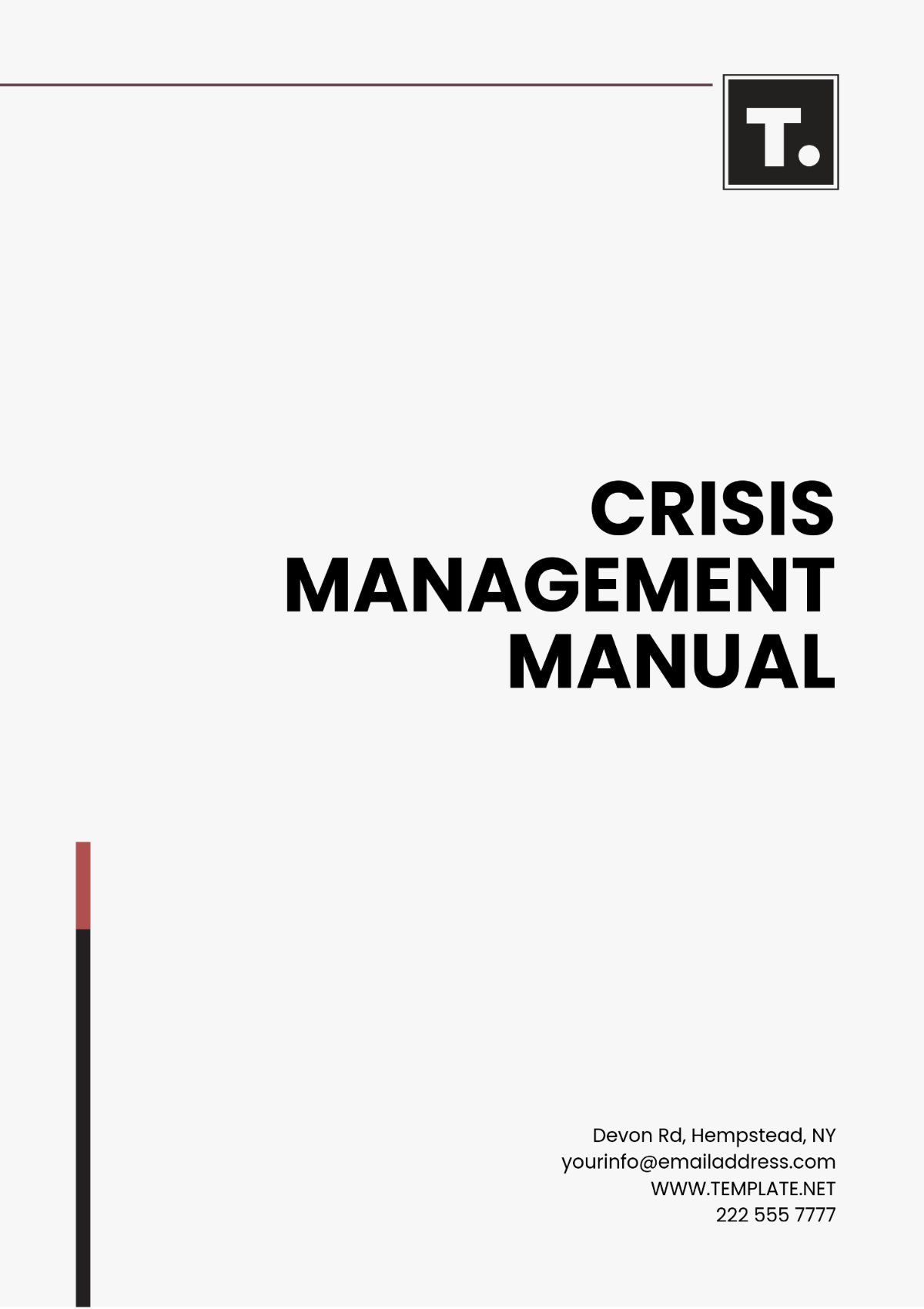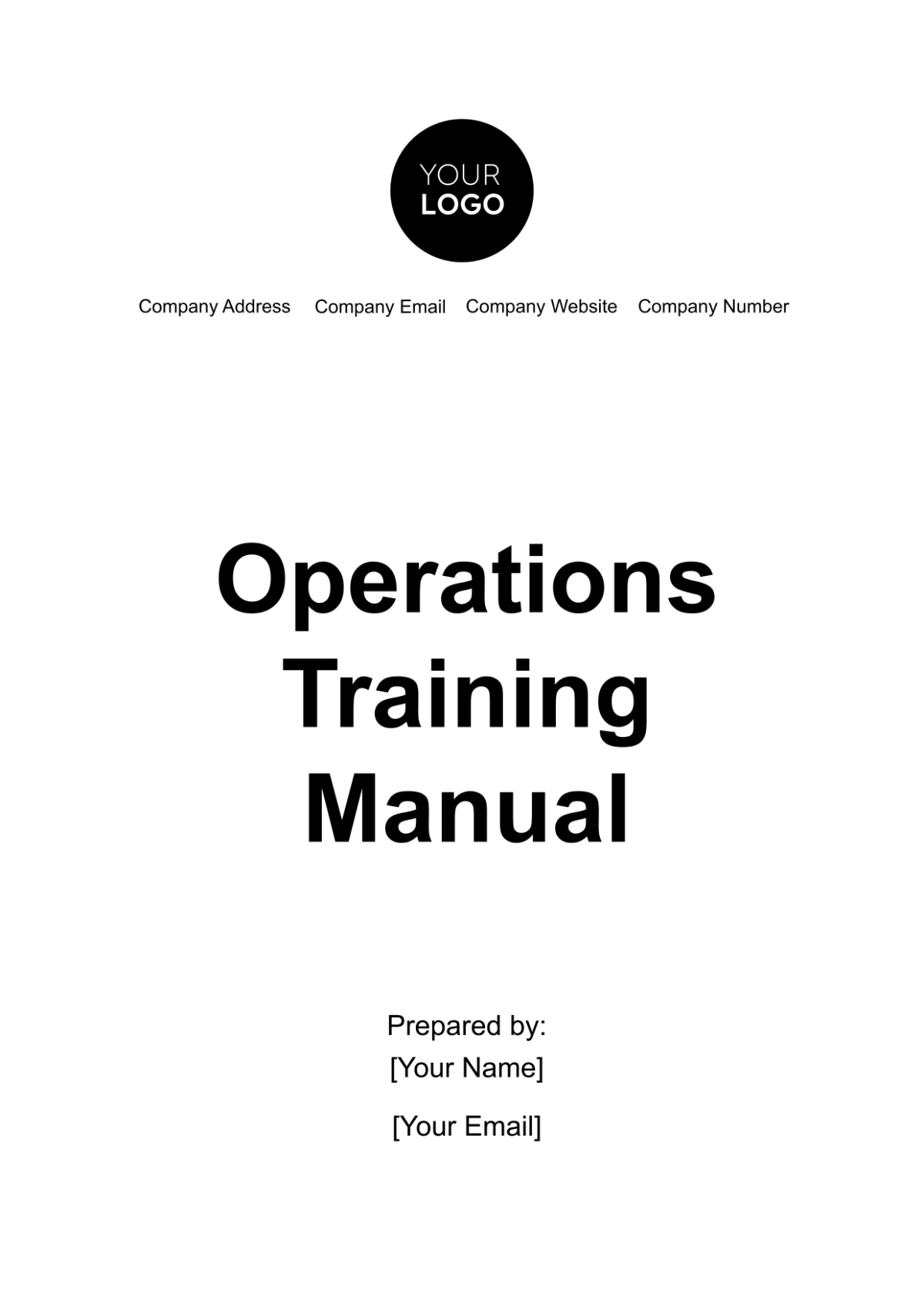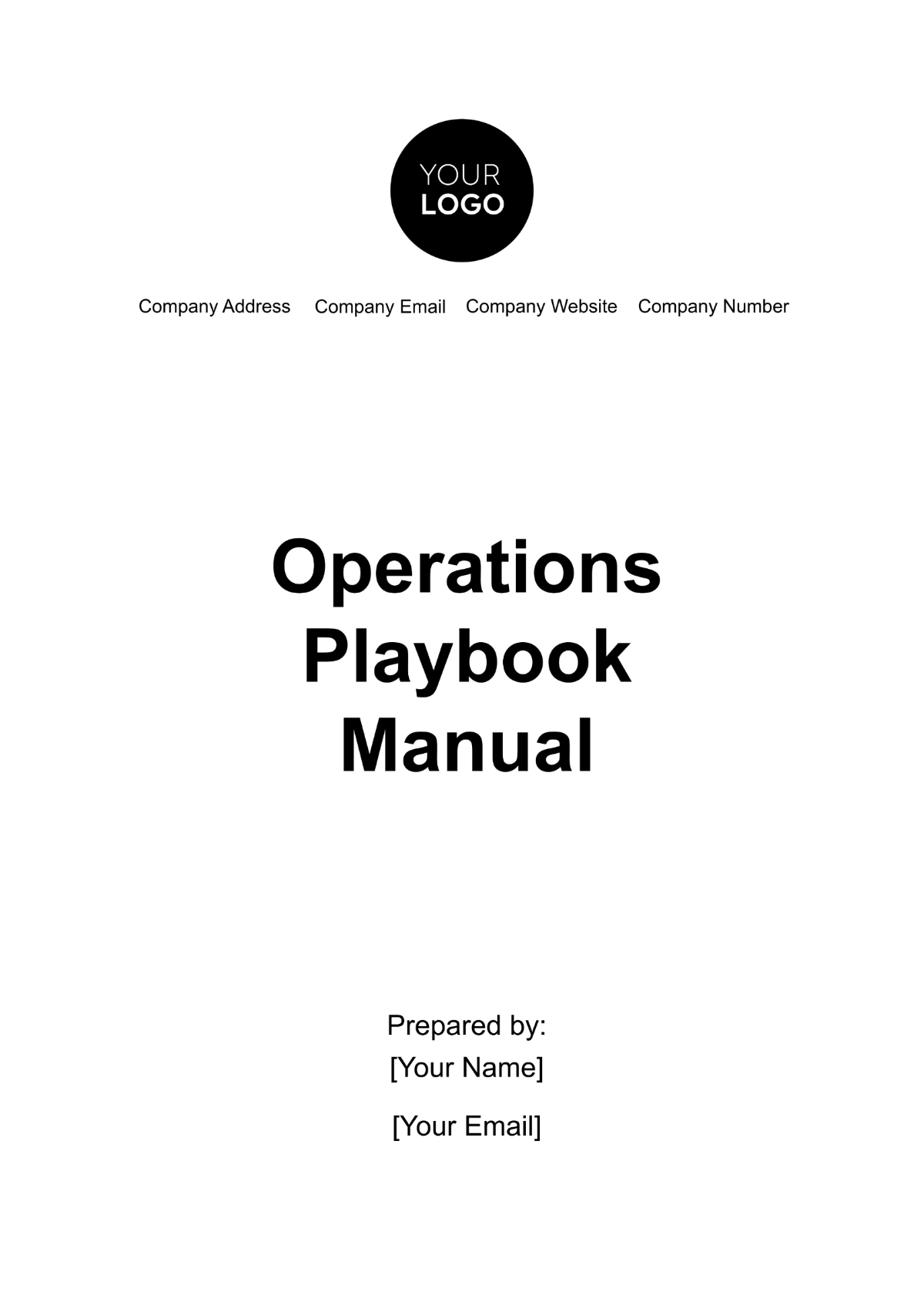Operations Playbook Manual
I. Introduction
Welcome to the Operations Playbook Manual for [Your Company Name]. This document serves as a comprehensive guide designed to streamline and standardize our operational procedures, ensuring efficiency and consistency across all departments. The purpose of this playbook is to provide clear, actionable guidelines that support our organizational goals and promote best practices in daily operations. By adhering to these protocols, we aim to enhance our operational effectiveness, mitigate risks, and deliver exceptional value to our clients.
At [Your Company Name], we are committed to maintaining high standards of excellence and compliance with all relevant US laws and regulations. This manual is a vital resource for employees at all levels, offering detailed instructions on procedures, responsibilities, and key performance indicators. As our company continues to grow and evolve, this playbook will be updated to reflect new policies, technologies, and industry practices. We encourage all team members to familiarize themselves with this document and integrate its guidelines into their daily workflows to contribute to our collective success.
II. Team Structure
This section outlines the team structure at [Your Company Name], detailing the roles and responsibilities essential for smooth operations. Understanding the hierarchy and the specific duties associated with each role helps ensure clarity and efficiency within our organization.
A. Roles and Responsibilities
The table below are the key roles within [Your Company Name], outlining the responsibilities and expectations for each position. Understanding these roles ensures effective management and operational consistency across the organization.
Role | Responsibilities |
|---|---|
Operations Manager | Oversees daily operations and ensures adherence to company policies. |
Team Leaders | Manage individual teams and report to the Operations Manager. |
Staff Members | Execute tasks as assigned by Team Leaders. |
B. Organizational Chart
Here, you'll find the organizational chart for [Your Company Name], including key designations and contact information. This chart provides a clear view of the reporting structure and helps facilitate effective communication within the team.
Designation | Name | Contact |
|---|---|---|
Operations Manager | [Name] | opmanager@email.com |
Team Leader | [Name] | tl@email.com |
III. Daily Operations
This section provides a structured approach to managing daily operations at [Your Company Name]. It includes a comprehensive checklist and communication protocols designed to ensure smooth and effective workflow throughout the day. Adhering to these guidelines will help maintain operational efficiency and foster clear, consistent communication across the team.
The Daily Checklist outlines essential tasks such as reviewing and prioritizing work, managing emails, conducting team meetings, and monitoring ongoing projects. In addition, the Communication Protocols specify the preferred channels for internal and external communication, including email, instant messaging, and video conferencing. By following these procedures, we aim to streamline daily activities and enhance overall productivity.
A. Daily Check-list
This checklist is designed to guide [Your Company Name] employees through their daily tasks to ensure all critical activities are completed efficiently. By systematically reviewing and prioritizing tasks, managing communications, holding team meetings, and monitoring projects, team members can maintain focus and productivity throughout the day. Adhering to this checklist helps keep operations running smoothly.
Review and prioritize tasks.
Check and respond to emails.
Conduct team meetings.
Monitor ongoing projects.
B. Communication Protocols
All team members should use the company’s preferred communication channels for internal and external communication, including:
Email
Instant Messaging
Video Conferencing
IV. Standard Operating Procedures
Effective Standard Operating Procedures (SOPs) are fundamental to maintaining consistency and compliance at [Your Company Name]. Detailed SOP documentation provides comprehensive step-by-step instructions, identifies necessary resources, assigns responsibilities, and outlines expected outcomes for each procedure. This ensures that every task is performed accurately and efficiently.
To ensure SOPs remain current and effective, they must be reviewed regularly. The SOP Review Process includes an annual revision schedule, feedback collection from team members, and final approval by the Operations Manager. These steps help keep procedures up-to-date and aligned with evolving practices and organizational needs.
A. SOP Documentation
Maintaining detailed and up-to-date SOPs is crucial for consistency and compliance. Each procedure should include:
Step-by-step instructions
Required resources
Responsible personnel
Expected outcomes
B. SOP Review Process
The SOPs should be reviewed periodically to ensure they are current and effective. The review process involves:
Annual revision schedule
Feedback collection from team members
Approval from the Operations Manager
V. Emergency Response
Effective emergency response procedures are vital for maintaining safety and minimizing risks at [Your Company Name]. Comprehensive guidelines are provided for managing emergencies, including crucial contact information and a clear evacuation plan. Ensuring that all employees are familiar with these protocols helps prepare them to act swiftly and efficiently in critical situations.
The Emergency Contact Information outlines key contacts for immediate assistance, such as emergency services and building security. Having these details readily available supports rapid response during emergencies. The Evacuation Plan details the steps for locating exits, following evacuation routes, and assembling at designated muster points, ensuring a well-organized and safe evacuation process. Implementing these measures helps safeguard everyone in the organization during unforeseen events.
A. Emergency Contact Information
Essential emergency contact details, including emergency services and building security, are provided for quick access during crises, ensuring prompt assistance when needed.
Contact | Name | Phone |
|---|---|---|
Emergency Services | - | 911 |
Building Security | [Name] | (555) 123-4567 |
B. Evacuation Plan
The Evacuation Plan outlines crucial steps for safely exiting the building and gathering at the muster point, promoting an organized and efficient evacuation process.
Locate nearest exits.
Follow the designated evacuation route.
Assemble at the designated muster point.
VI. Performance Metrics
Monitoring performance metrics is vital for [Your Company Name] to ensure operational efficiency and achieve business objectives. This section details how Key Performance Indicators (KPIs) and systematic reporting contribute to assessing and enhancing performance. By focusing on relevant KPIs, we can measure critical aspects of our operations and make data-driven decisions.
KPIs such as Customer Satisfaction Score, Average Resolution Time, and Employee Productivity provide valuable insights into our service quality, issue resolution efficiency, and staff performance. Regular reporting through monthly performance reports, quarterly strategic reviews, and annual evaluations helps identify strengths and areas for improvement, facilitating continuous enhancement and alignment with strategic goals.
A. Key Performance Indicators (KPIs)
Tracking Key Performance Indicators (KPIs) is essential for assessing the efficiency and effectiveness of operations at [Your Company Name]. KPIs offer valuable insights into various dimensions of performance, helping to align day-to-day activities with broader strategic goals. Key KPIs include:
Customer Satisfaction Score: This metric measures how well our services or products meet client expectations. High scores indicate strong customer satisfaction, which is crucial for client retention and business growth.
Average Resolution Time: This KPI tracks the average time taken to resolve customer issues or internal tasks. A shorter resolution time often reflects better efficiency and responsiveness, enhancing overall service quality.
Employee Productivity: This metric assesses the output and efficiency of employees. Monitoring productivity helps identify high-performing areas and those needing improvement, supporting better resource allocation and performance management.
B. Reporting and Analysis
To drive continuous improvement, regular reporting and analysis are necessary. These processes ensure that performance metrics are not only tracked but also used to inform strategic decisions and operational adjustments. The key components of our reporting and analysis framework include:
Monthly Performance Reports: These reports provide a snapshot of key metrics, allowing for timely identification of trends, potential issues, and immediate corrective actions. They help maintain operational focus and address short-term challenges effectively.
Quarterly Strategic Reviews: These reviews offer a more comprehensive analysis of performance against strategic goals. They facilitate a deeper understanding of progress, enabling adjustments to strategies and tactics as needed to stay aligned with long-term objectives.
Annual Performance Evaluations: These evaluations deliver an in-depth assessment of overall performance over the year. They highlight major achievements, areas for improvement, and long-term trends, providing a foundation for setting future goals and refining strategies.
By integrating these practices, [Your Company Name] can effectively measure performance, identify areas for growth, and make informed decisions to enhance operational success.
The Operations Playbook Manual serves as a vital resource for ensuring operational excellence at [Your Company Name]. By adhering to the guidelines and procedures outlined in this manual, we foster consistency, efficiency, and effective communication across all levels of the organization. Regular review and adherence to these protocols will help us achieve our strategic goals, enhance performance, and maintain high standards of quality. We encourage all team members to engage with this manual actively and integrate its practices into their daily routines, contributing to our collective success and continuous improvement.

